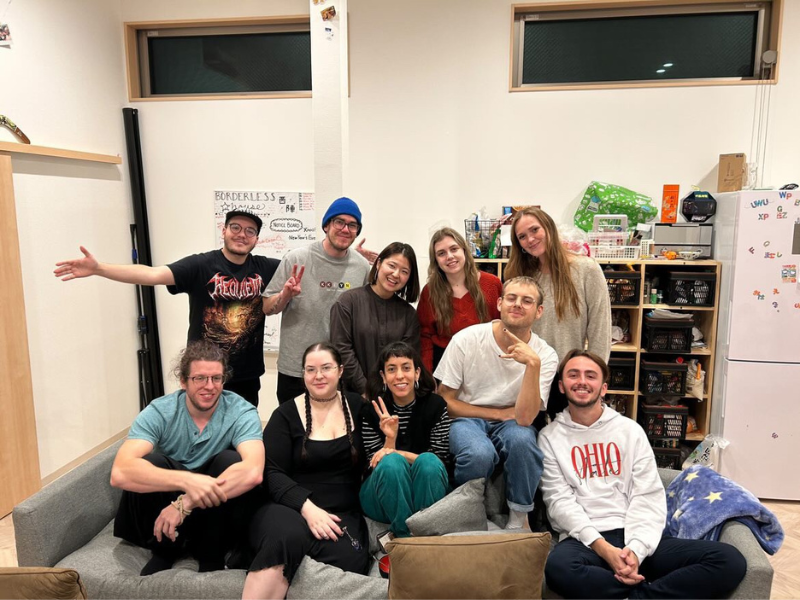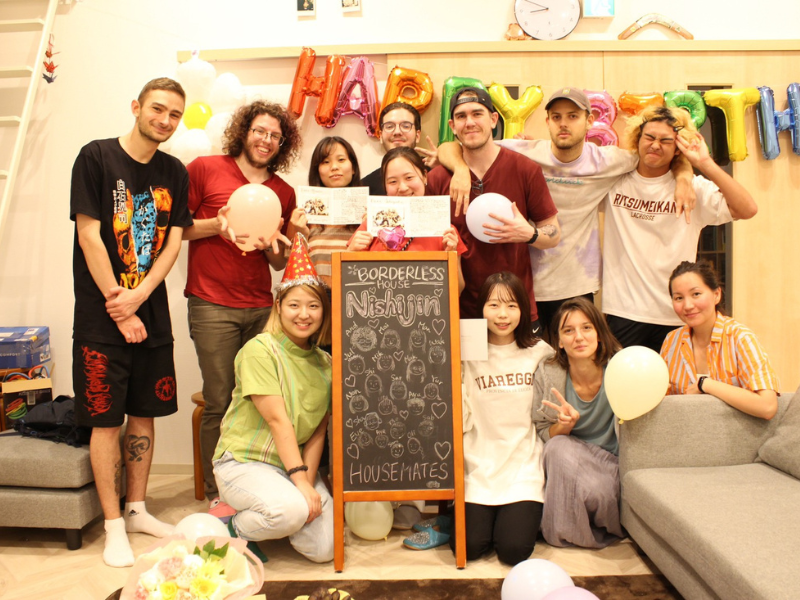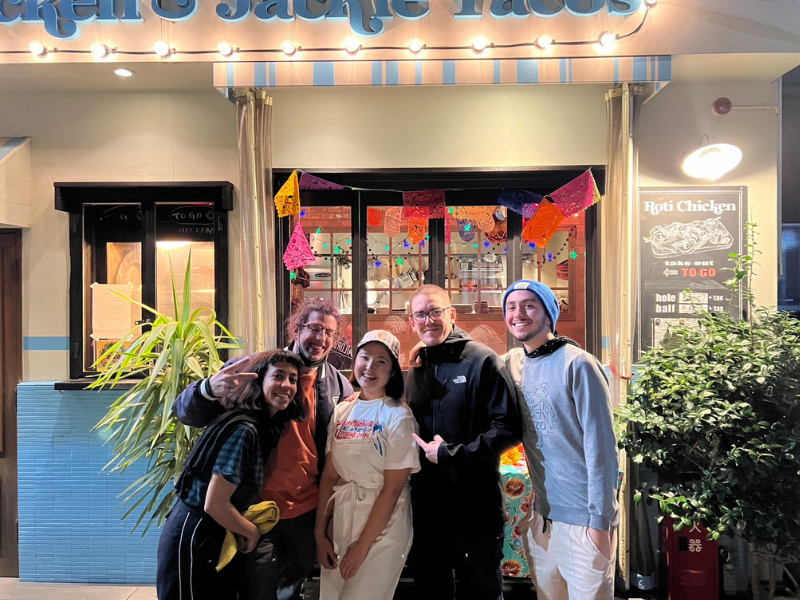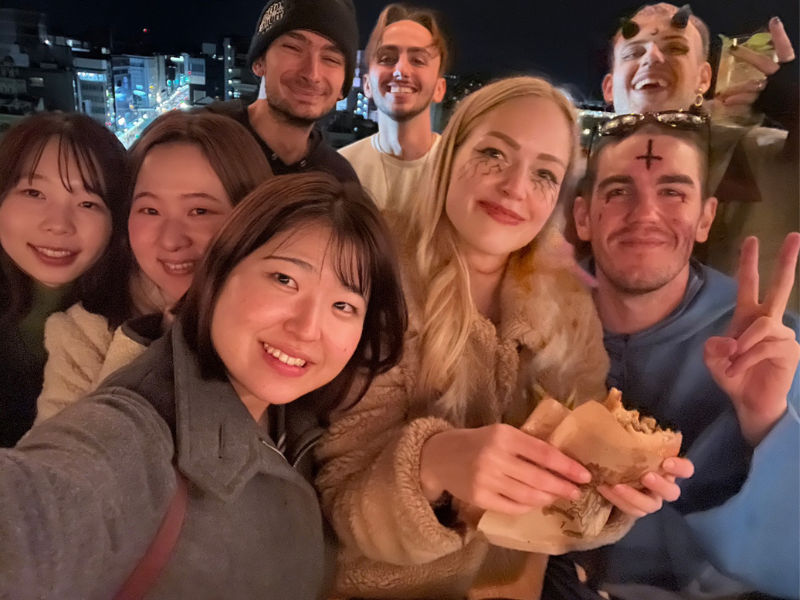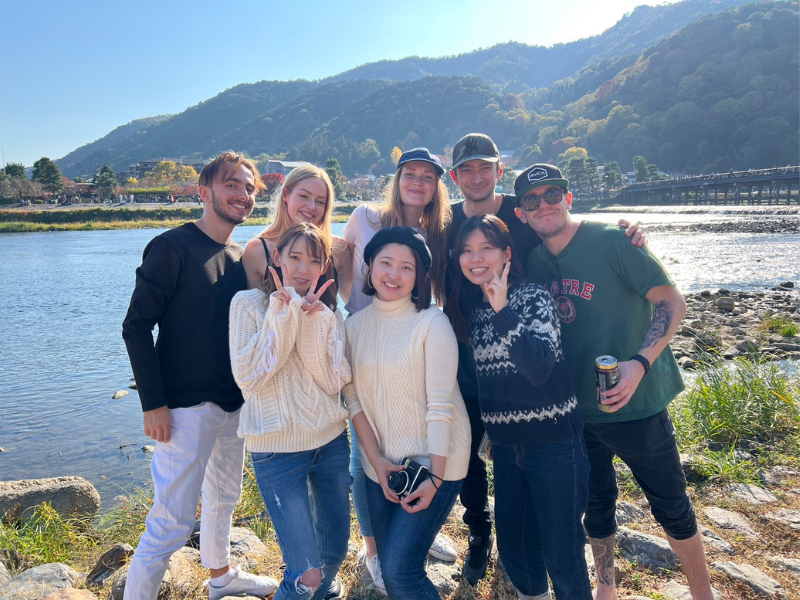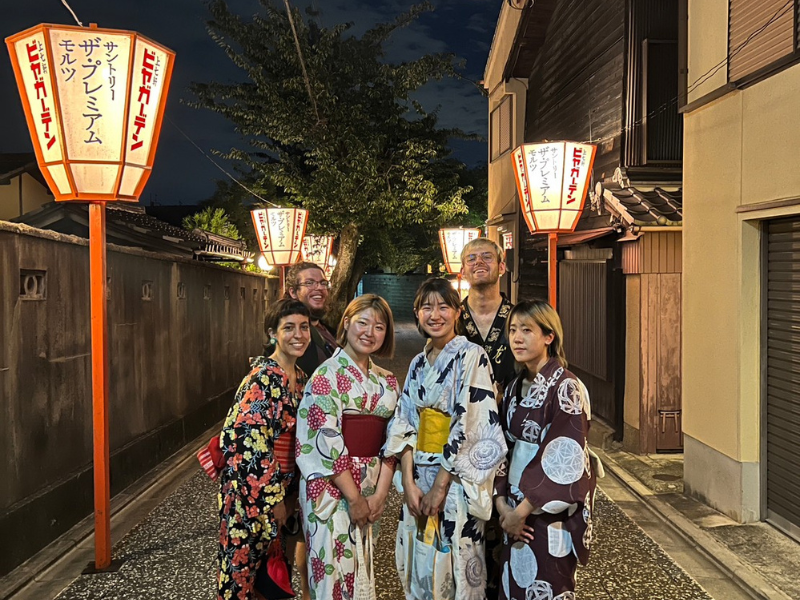Spring is the season when many young people begin new chapters in their lives. But for parents, it can also be a time filled with both pride and worry, especially when it is time to send their child off to live on their own for the first time.
This time, we spoke with Mieko-san, a first-year university student who spent six months living in Borderless House Ikebukuro-Oyama 1, and her mother Kayoko-san.
Until then, Mieko had always lived at home. So what was it like for her to move into a share house for the first time?
We also asked her parents how they felt about letting her live in Borderless House – and how this experience unexpectedly deepened the bond between mother and daughter.
Meet the Family
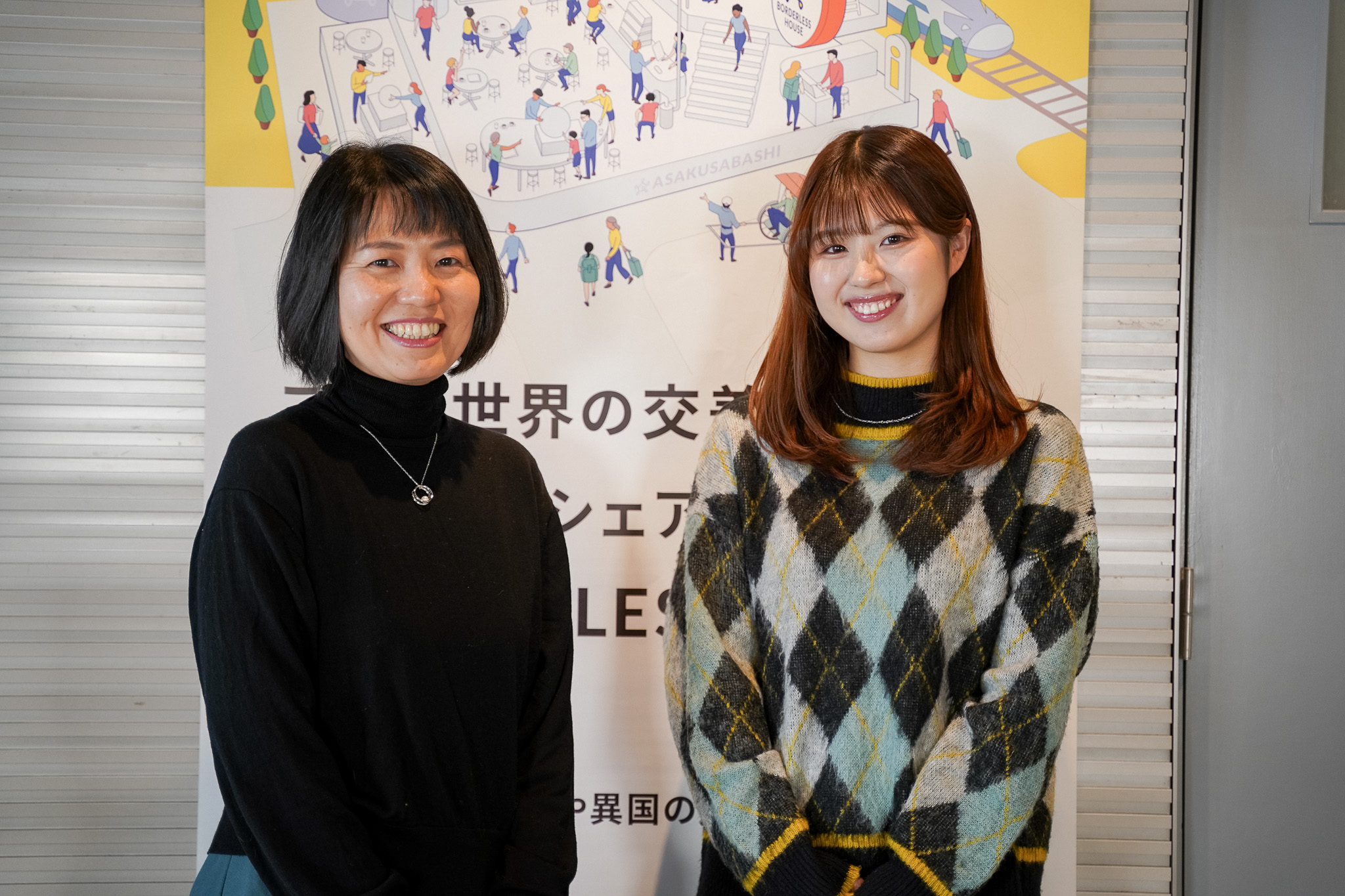
Mother: Kayoko-san
A cheerful, positive mother of two who used to work at Borderless House
Daughter: Mieko-san
A first-year university student majoring in community welfare (at the time).
Stayed for six months at Borderless House Ikebukuro-Oyama 1 from September 2024.
Slightly shy but full of curiosity and a strong desire to learn.
Moving in with both anxiety and excitement, a mother’s encouragement behind her daughter’s decision
──Mieko-san, you decided to move into Borderless House during your first year of university. Did you already know that your mother was working there as a staff member?
Mieko-san:
Yes! Actually, the reason I even started considering moving in was because of my mom’s encouragement. She’s always had a strong international mindset, and that influenced me a lot. I was already interested in studying English and going abroad since high school.
At first though, when she suggested Borderless House, I immediately said, ‘Living with other people? No way, that is impossible for me!’ Maybe part of me wanted to rebel a little because it was my mom’s workplace too.
But about a year later, around the time I started university, I slowly began to feel more curious. I remember asking my mom all kinds of questions about what life in a share house was really like.
──What changed in how you both felt about it?
Mieko-san: After starting university, I began to feel a stronger desire to improve my English. I was also becoming more interested in studying abroad, and I thought it would be great to build up more practical English skills while I am still in Japan. When I talked about that at home, my mom said, ‘Then Borderless House sounds perfect for you!’
Kayoko-san: The good thing about Borderless House is that you can start living there for as short as one month. I told her, ‘If it does not feel right, you can always move out quickly, so why not just give it a try?’ I wanted her to see it as something she could experience casually, without pressure.
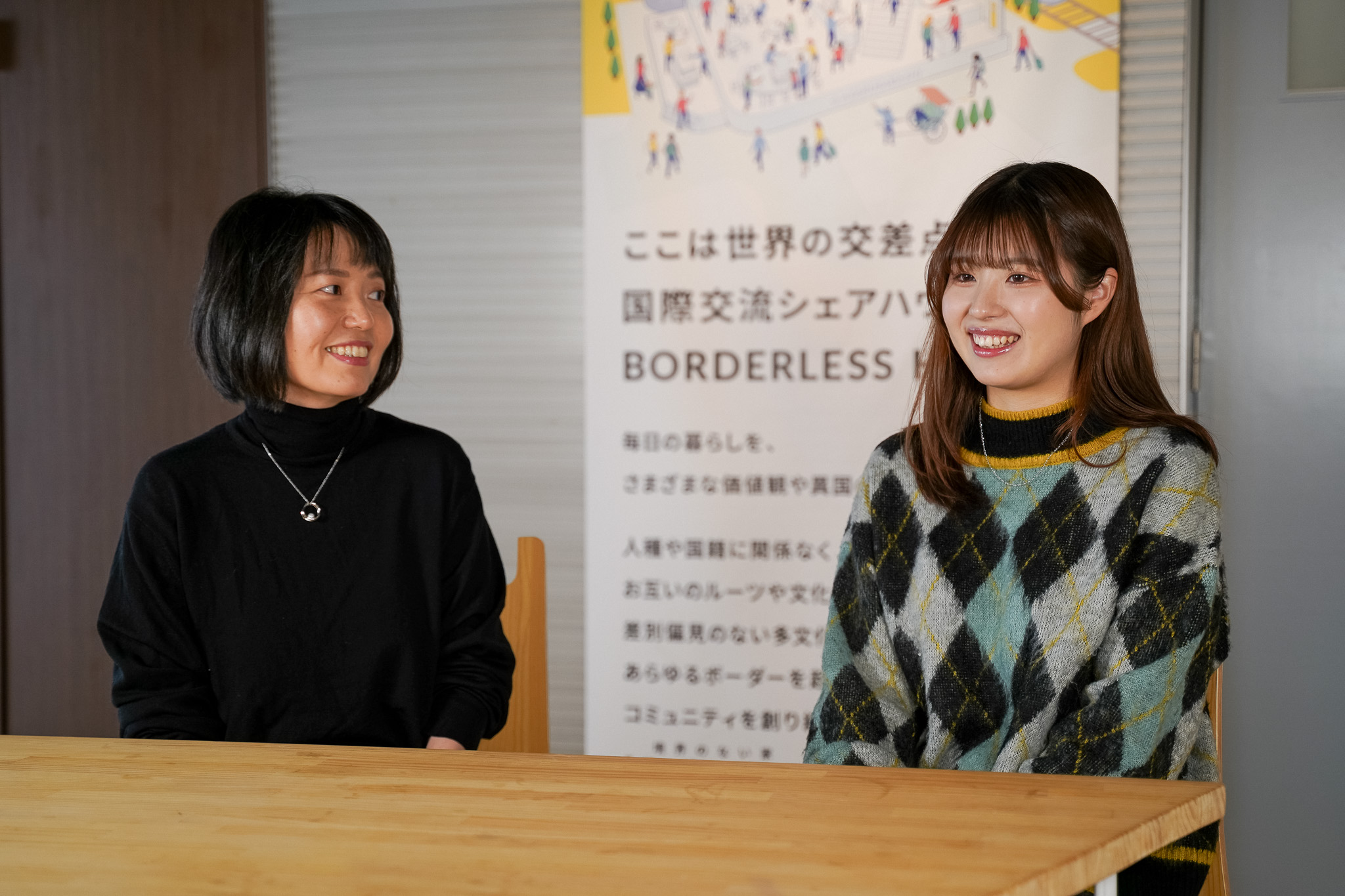
Mieko-san: Exactly. My mom really gave me the final push to go for it.
And honestly, the location was also a big reason. From my parents’ house, it took me about two hours round trip to get to university, but living in Ikebukuro Oyama House shortened my commute a lot. Realizing how much more convenient life would be made it easier for me to make the decision.
──Were you not nervous about moving in?
Mieko-san: Of course I was! Moving in with people I have never met before and in a different language environment made me wonder if I could communicate smoothly. Unlike reading or listening practice, conversation in English happens in real time, so I worried I might not be able to keep up with everyone.
But honestly, that was also what I was most excited about! Until then, the only English speakers I have really talked to were the ALT teachers who occasionally came to our classes, and even then it was never one-on-one for long. I was both nervous and curious to see what it would be like to live surrounded by English every day, it felt like such an adventure!
──What were you most looking forward to?
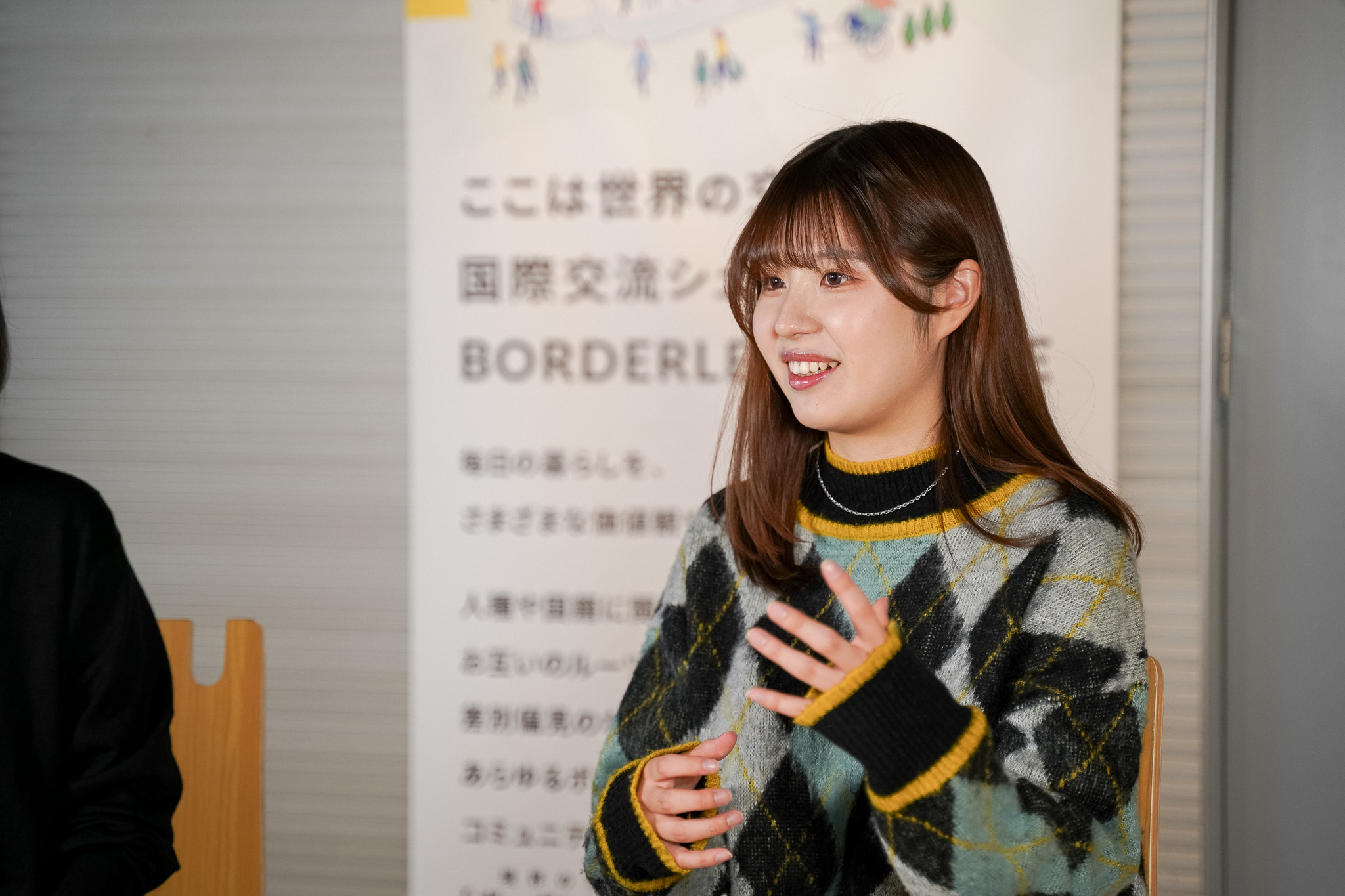
Mieko-san: Once I decided to move in, I found out that all of my housemates were older than me. Beforehand, I have looked at the self-introduction comments on the official website and saw that many of them were already working adults. I thought it would be interesting and really valuable to hear about their jobs and workplaces.
I had also been checking out Borderless House’s blog and Instagram, and I saw that there were regular house parties and events where residents from different houses could meet. I was excited to join those and experience that kind of exchange in real life!

The residents’ self-introduction comments posted on the official website.
──As parents, how did you feel when your daughter finally moved into the share house?
Kayoko-san: Honestly, I was more happy than worried. I was proud to see my daughter take on a new challenge.
Since I work at Borderless House myself, I also understood the safety and structure of the houses. If anything, it was my husband who was more concerned, he was always saying things like, ‘Make sure you lock your door at night,’ or ‘Don’t walk alone after dark!’
Even so, Borderless House share houses are very secure – each room and shower is individually locked, and most houses are located close to stations, so there is less need to walk far at night. I actually felt it was safer than her living alone in an empty apartment. In the end, I felt reassured knowing she would be coming home to a place where people were waiting for her.
A fun and inspiring life with housemates – No mroe fear of speaking English!
─It has been about six months since you moved in. How has life in the share house been so far?
Mieko-san: It is honestly been so much fun! Everyone was so friendly from the very beginning, and I quickly felt comfortable. Especially the international members. Many of them wanted to learn Japanese or become friends with Japanese people, so they were really open and approachable.
We often go out together on our days off – to cafés, pottery classes, and recently, about ten of us even went to Fuji-Q Highland!
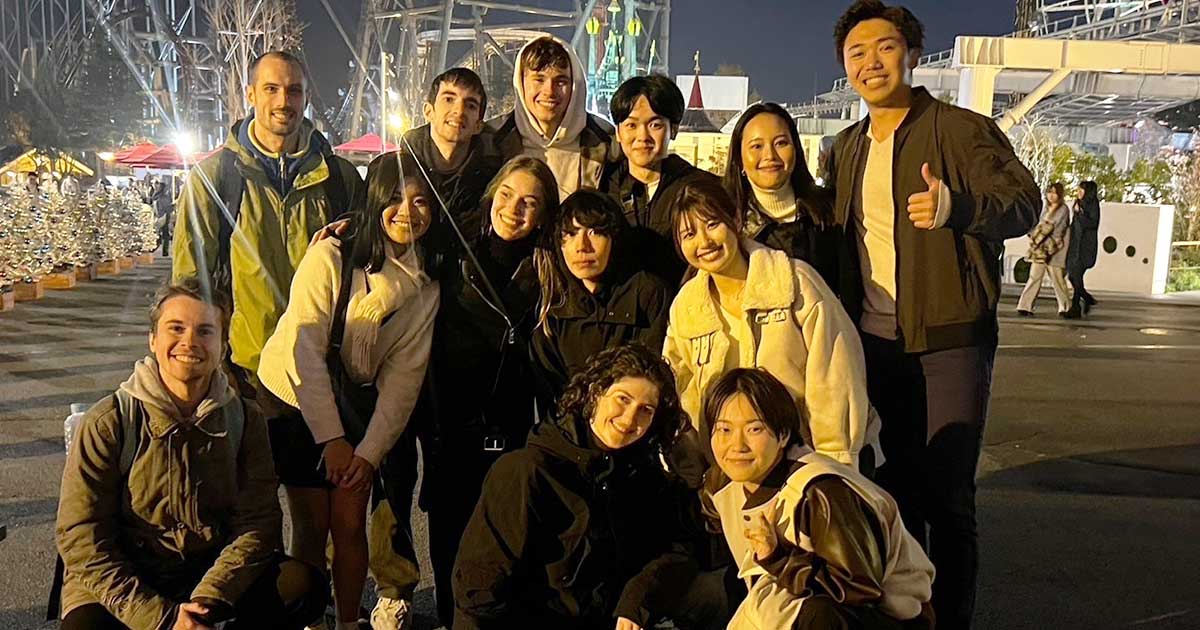
When someone has a birthday, we celebrate with a party in the house, so it is always lively and cheerful.
Kayoko-san: And even the former housemates who have already graduated still come back to visit often, don’t they?
Mieko-san: Yes! One of my former German housemates, who had already graduated before I moved in, came back to Japan in March and visited us several times. That period felt like a non-stop party, it was so much fun!
Since it is a mixed-gender house, I was a little nervous at first about living with male residents, but everyone was so kind, mature, and considerate. They always looked out for me, so I felt very comfortable.
─ I am so glad to hear you are enjoying life there! How was commnuicating in English? Was there something you were worried about?
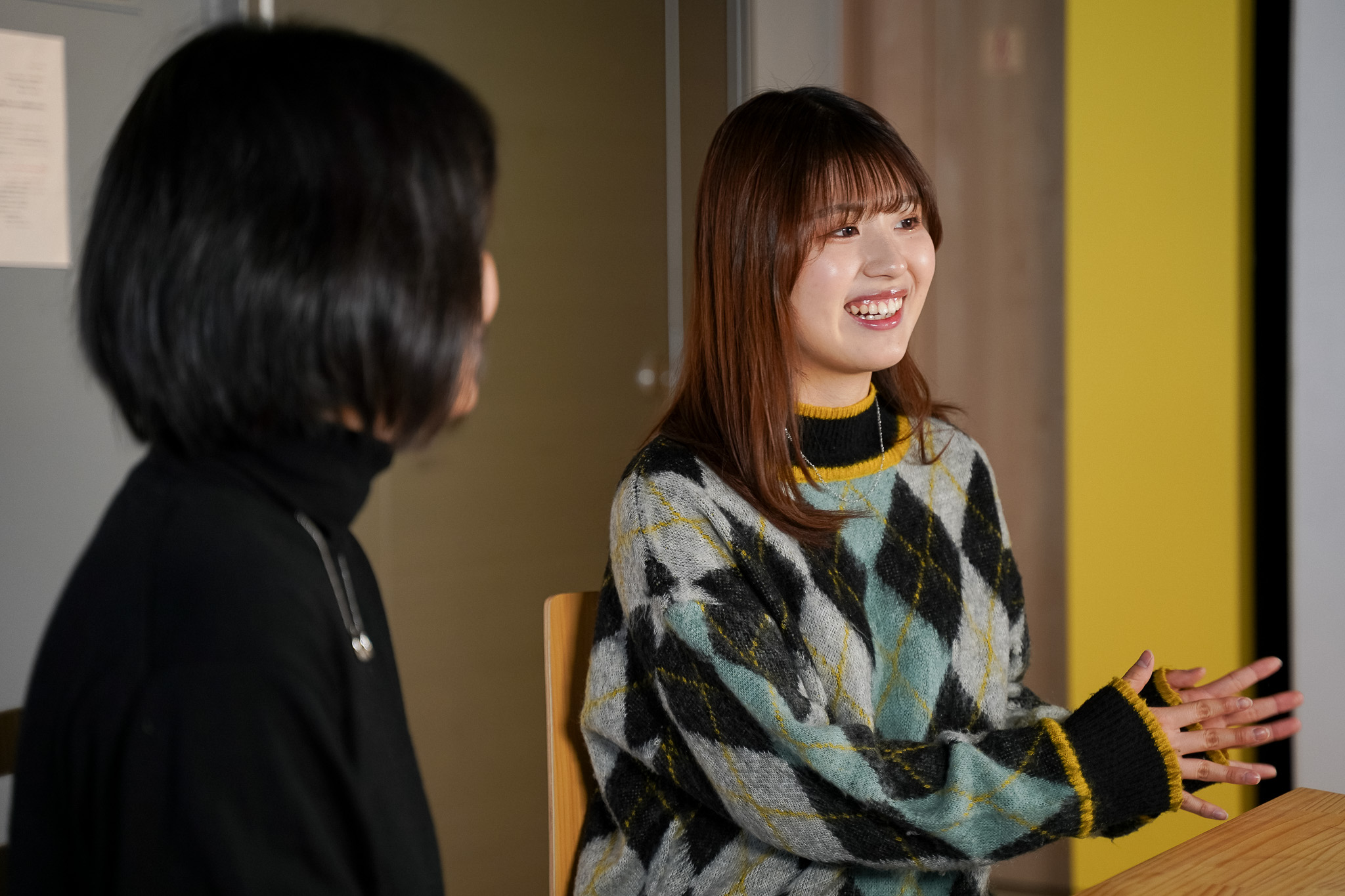
Mieko-san: At first, I definitely felt resistance toward speaking English. But the housemates were so kind – they would listen patiently even when my English was not perfect, and they taught me words when I did not know how to say something.
It is still far from perfect, but I no longer feel scared to just try speaking.
─ Since living in a share house, have you noticed cultural diferences?
Mieko-san: Yes, especially with food culture!
One time, someone mixed carrots into plain rice and served it, and I could not help thinking, ‘Wait… is that actually good?’
A lot of people really like Japanese food though, so we often end up eating Japanese dishes together.
Also, many of the international members do not soak in the bathtub, so the bathtub in the house was basically unused. As someone who loves taking baths, I started going alone to the nearby public bath by Oyama Station and enjoyed relaxing in a huge bath.
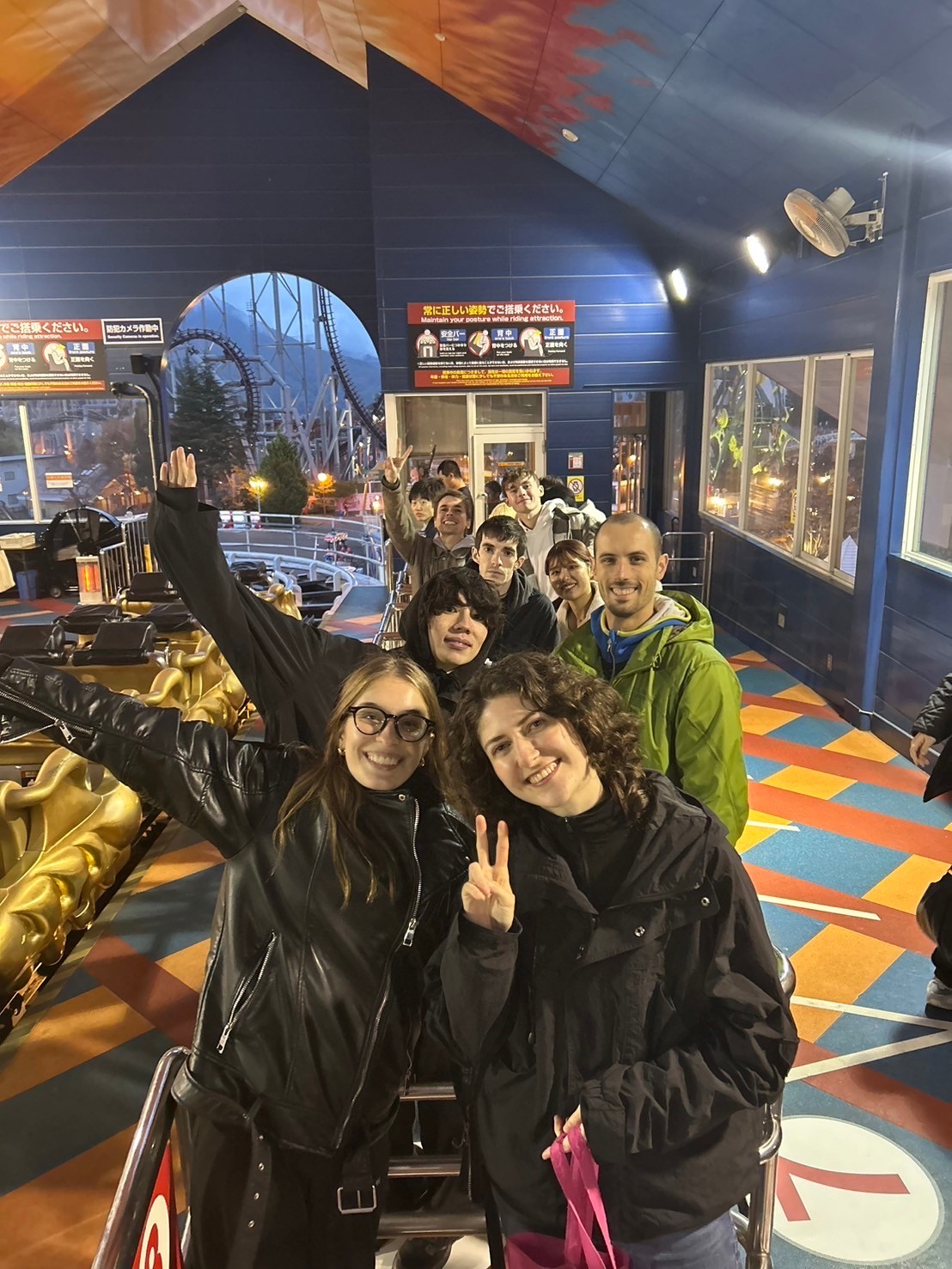
Growing through share house life – Even household skils improved
─ After moving in, how were cooking and cleaning handled?
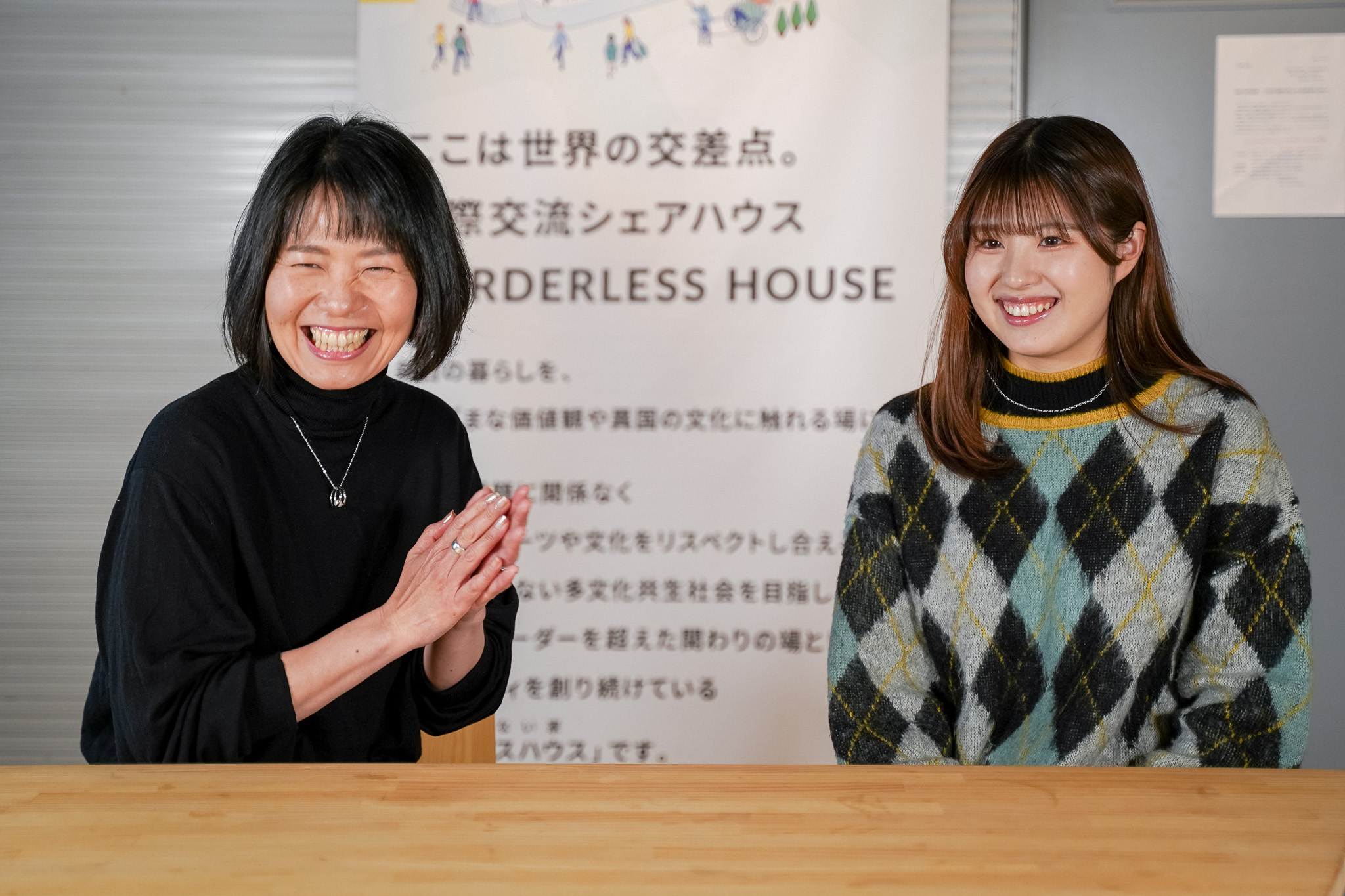
Mieko-san: Our house had clear rules for dividing the cleaning duties, so everyone would rotate weekly and share the tasks.
For cooking, sometimes someone would say, ‘I am making curry, want to cook together?’ and we would make it as a group. But honestly… I was not very good at cooking for myself. I think I mostly just managed to cook rice.
I relied a lot on eating out or frozen food, so living in the share house made me realize how much I appreciated my parents’ cooking. When I go back home occasionally, I make sure to eat a lot of vegetables!
Kayoko-san: When she still lived at home, I was the type who liked taking care of everything, so I ended up doing most of the housework.
But the other day when Mieko-san came home after living in the share house, she stood up after dinner and started washing the dishes without being asked… and I was so touched I almost cried.
It made me feel like she had grown – that living in the share house helped her learn to look after herself.
Mieko-san: In the share house, we buy cleaning supplies and daily essentials using shared funds that everyone contributes to, so I became more aware of managing money for daily life.
Now I am paying for my living expenses by working part-time, so I keep a household budget and track everything carefully. It made me realize how important money management is.
How share house life changed the relationship between mother and daughter
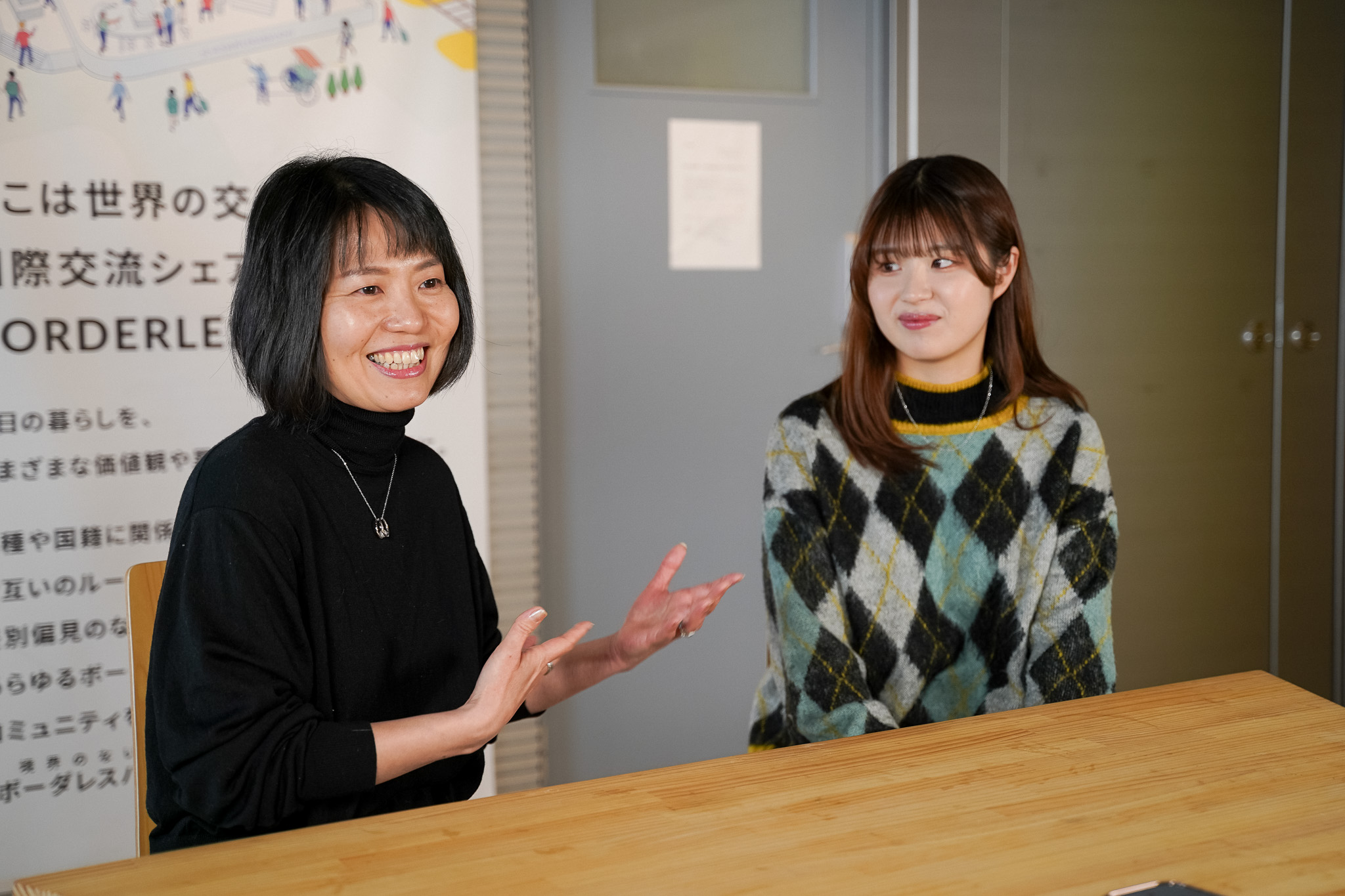
─ During your six months in the share house, was there anything that left a strong impression on you?
Mieko-san: One time, I stayed up all night talking in the living room with my housemates who have already been working for a while, that memory really stayed with me.
Some housemates were full-time company employees, others were freelancers working independently, and some were using English every day at their jobs.
While talking with them about their past experiences, future dreams, and life goals, I found myself inspired over and over again.
There was also a moment when I opened up to a housemate about being unsure of my future path. They told me, ‘It’s never too late to figure out what you want to do. Try lots of things now, and then choose slowly.’
It felt like a ray of light shining into my life. I had always been someone who looked backward instead of forward, but that one conversation helped me move on with a more positive mindset.
Until high school, my friendships were mostly with people who thought and lived just like me. I think I lived in a pretty narrow world. But at Borderless House, I met people of all different ages, nationalities, and backgrounds – and talking with them opened my eyes to values and ways of living I never knew existed.
Thanks to the housemates I met there, I realized just how many different paths and options exist in life.
─ From your perspective, Kayoko-san, what changes did you notice in Mieko after she moved in?
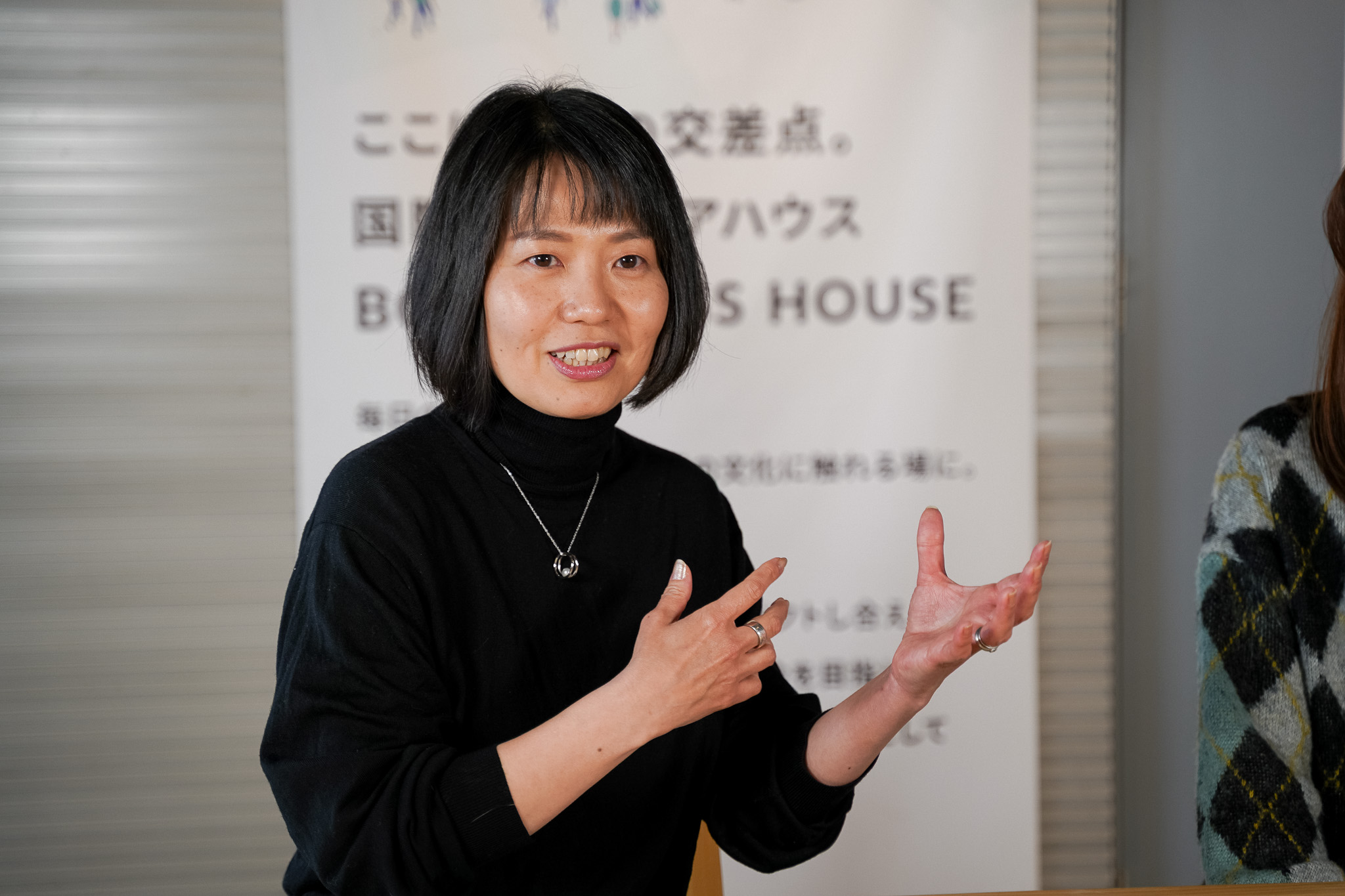
Kayoko-san: She has become so much more reliable.
Before, she was quiet and shy – she hardly ever talked to boys in her class. But now, whenever she comes home, she happily tells us stories about her housemates.
I think Mieko–san herself may not fully realize it, but her perspectives have widened so much.
By living with working adults and housemates from different backgrounds, she was exposed to different values and ways of living. I feel like she now sees her future with a much more positive mindset.
─ Did your mother-daughter relationship change as well?
Kayoko-san: I think we can talk with a healthier distance now. When we lived together, I tended to do everything for her because I wanted to take care of her. Sometimes I would even nag her about small things – we would occasionally clash because we were too close.
But now, we communicate more, we message each other on LINE to check in, we go out for meals together near Oyama Station, and when she comes home, she happily tells me stories about her housemates.
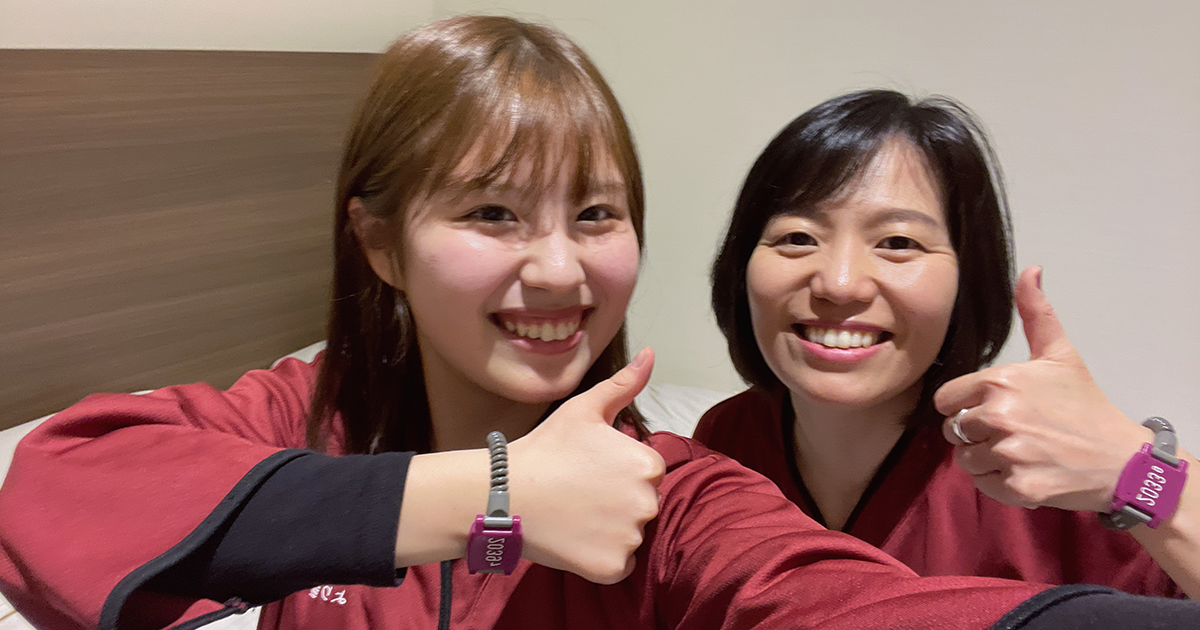
Seeing her enjoy her life so much makes me think, ‘Wow… if only I had a place like that when I was her age!’”
Through her experiences, I feel like I am also learning and growing.
We are no longer just mother and daughter, we are able to speak to each other with mutual respect, as two individuals. That change means so much to me.
From Mieko-san to young people curious about Borderless House
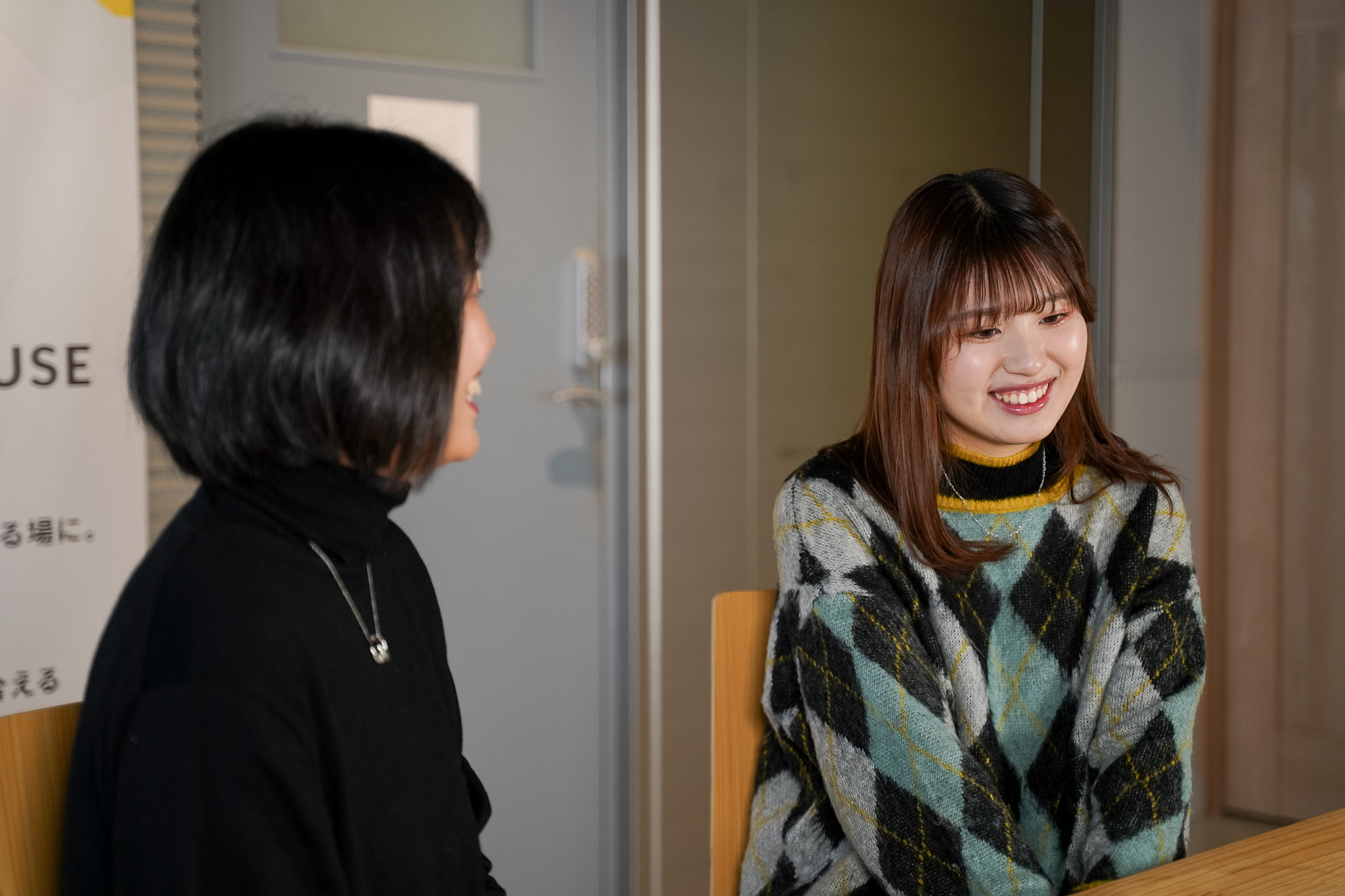
Mieko-san: Starting something new can be really scary. It always feels safer to stay in the lifestyle you are used to.
But unless you try, you will never know and there is a whole world you would not see until you take that first step.
Through living in the share house and connecting with my housemates, I truly became more confident and forward-thinking. I discovered new things I wanted to do and new goals I never would have imagined before.
Borderless House allows you to try living there for just one month, so if you are a university student, I really encourage you to take that first small step.
A message from Kayoko-san to parents who are considering this for their children
Kayoko-san: When it comes to your child, it is completely natural to worry, no matter what kind of life they are choosing. That is what being a parent is.
At Borderless House, you can see self-introductions and community information on the website, and after applying, you can also have an online consultation. So you can ask anything that concerns you and get a clear image of what life will be like before they move in. I think that helps ease a lot of worries.
There are experiences that children can only have while they are young. And I believe sending them off, even though it is scary, allows them to grow twice as much.
So if your child is ready to take a step forward, I hope you can be the wind at their back.
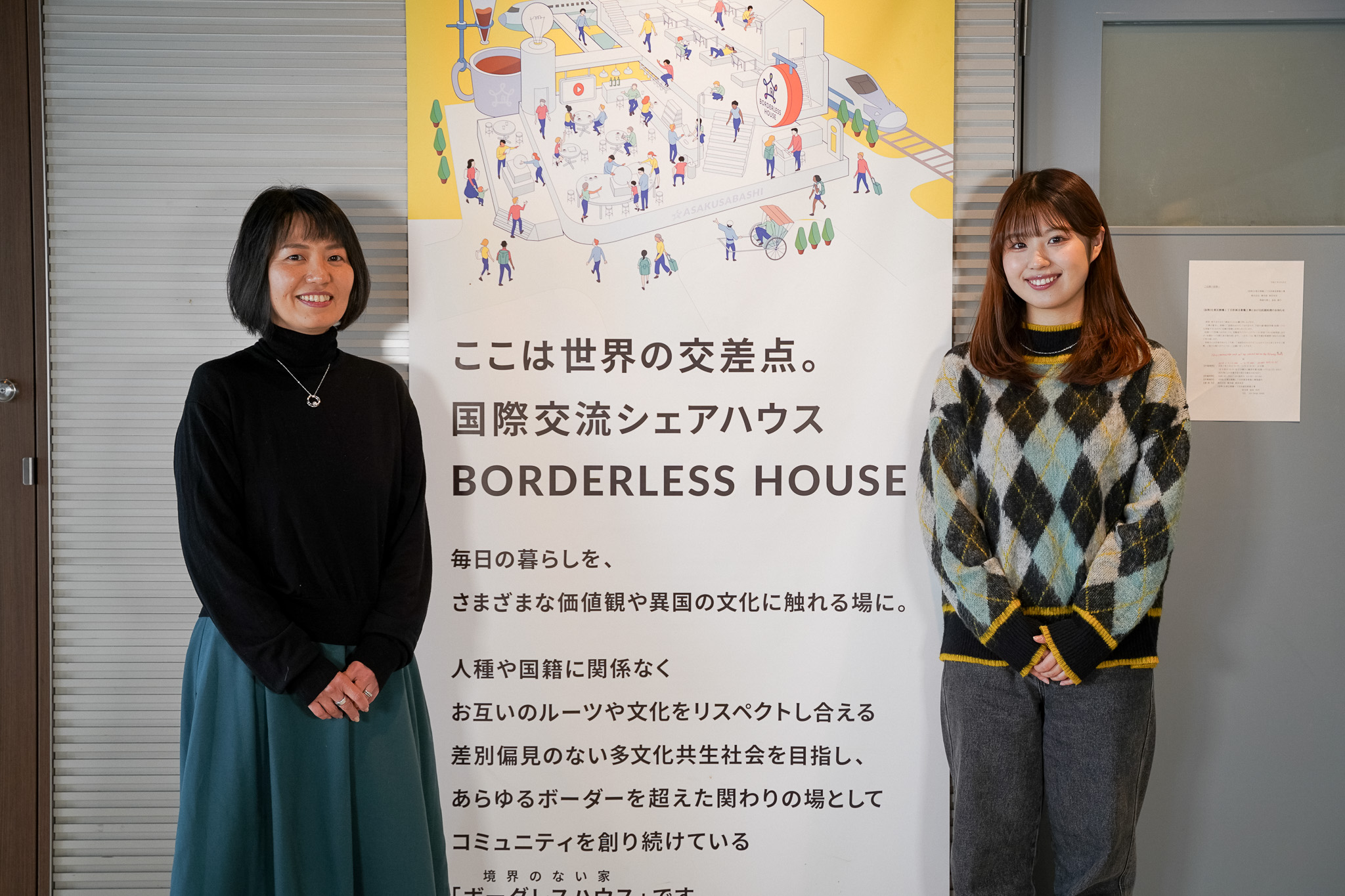

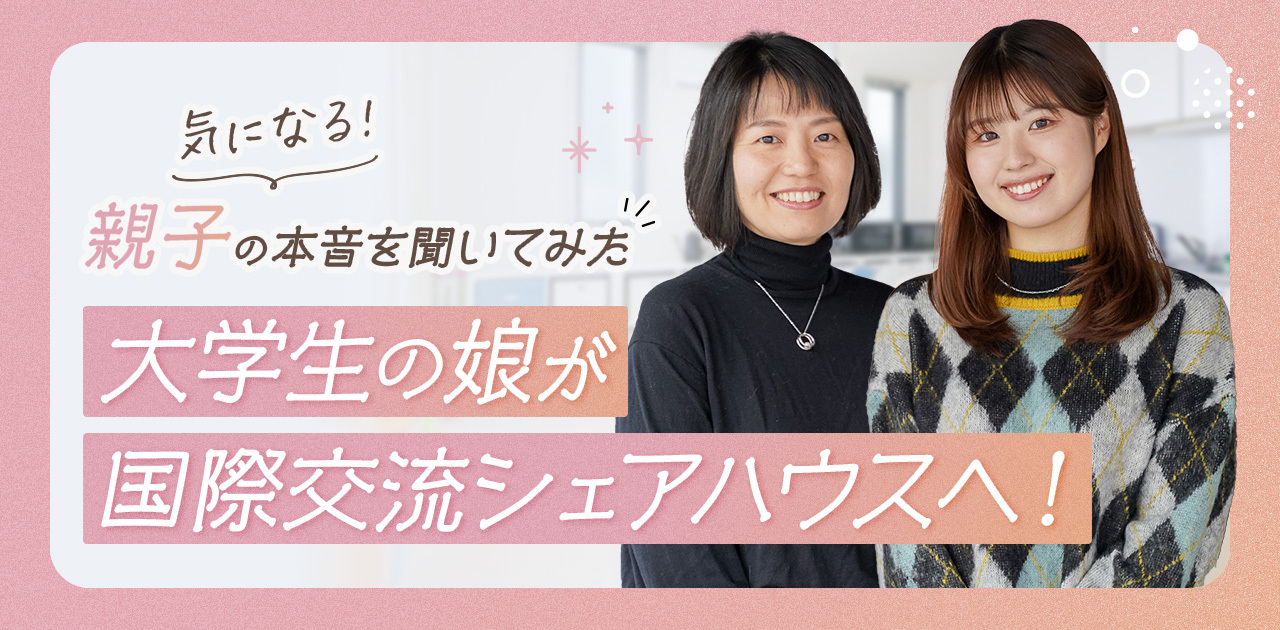
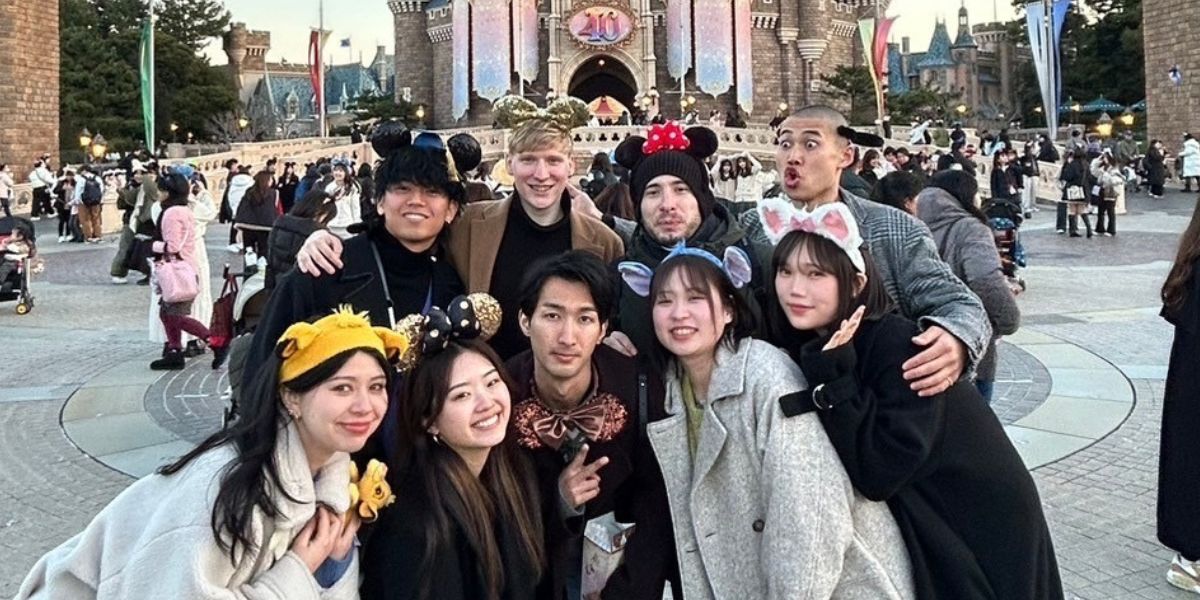


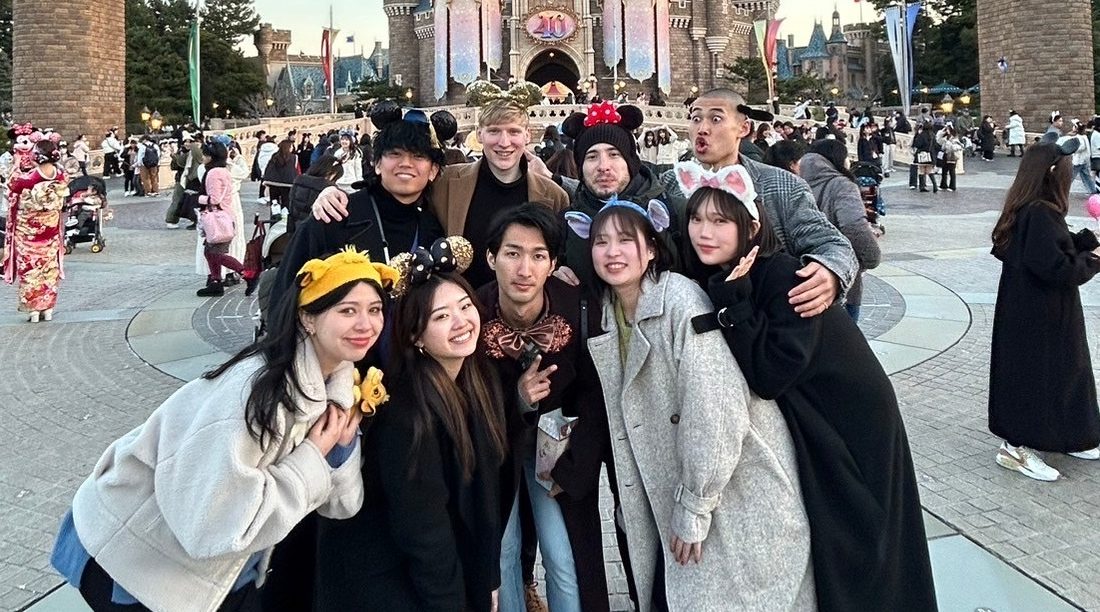
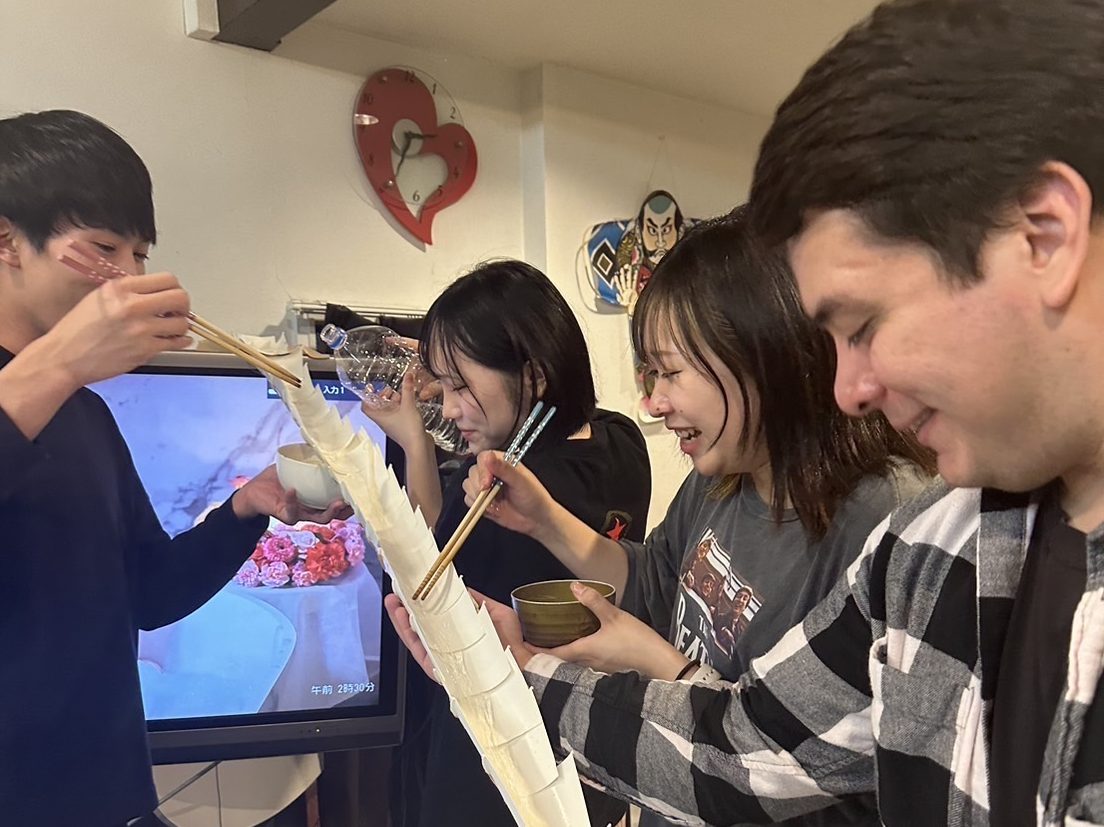


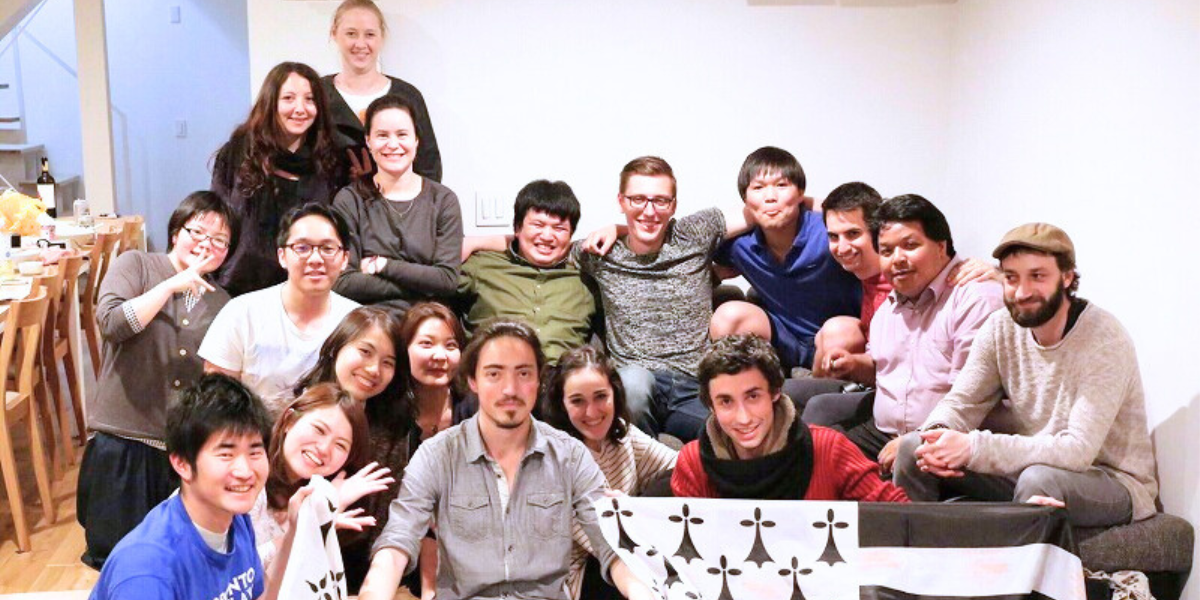
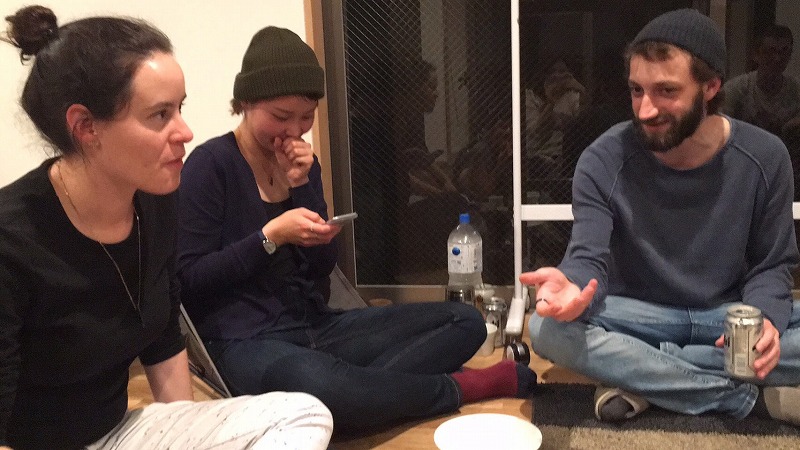
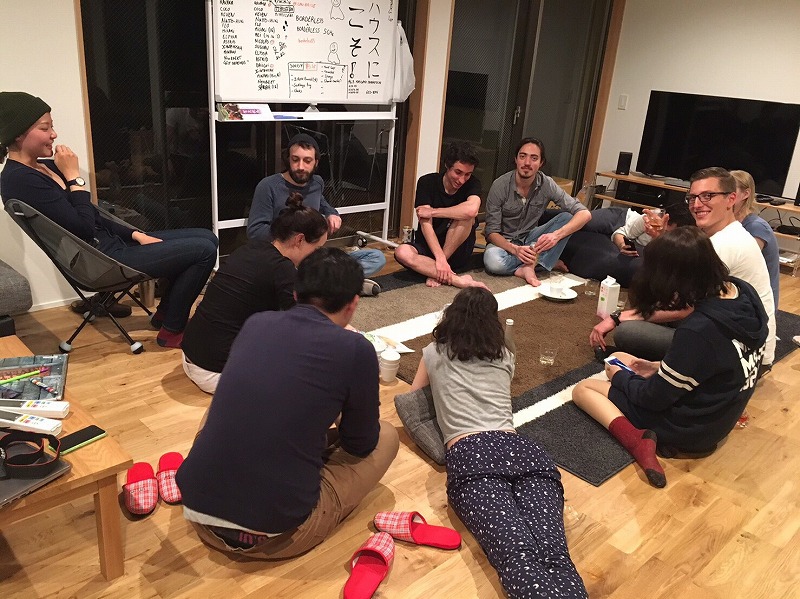
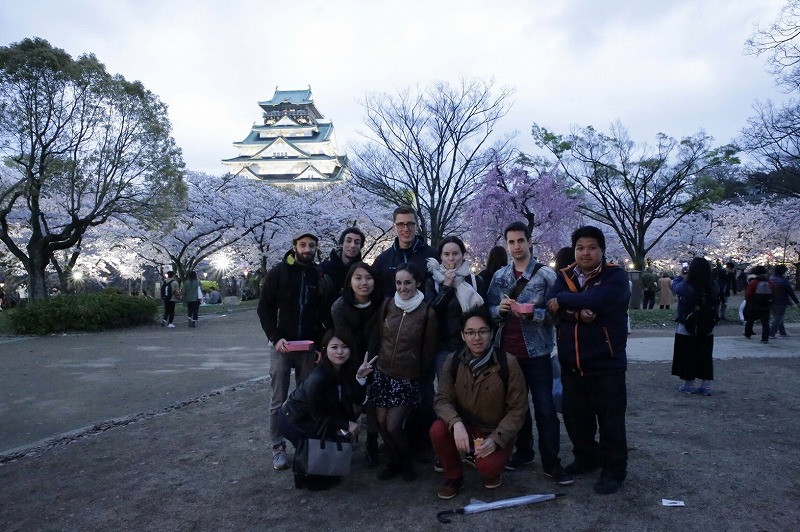
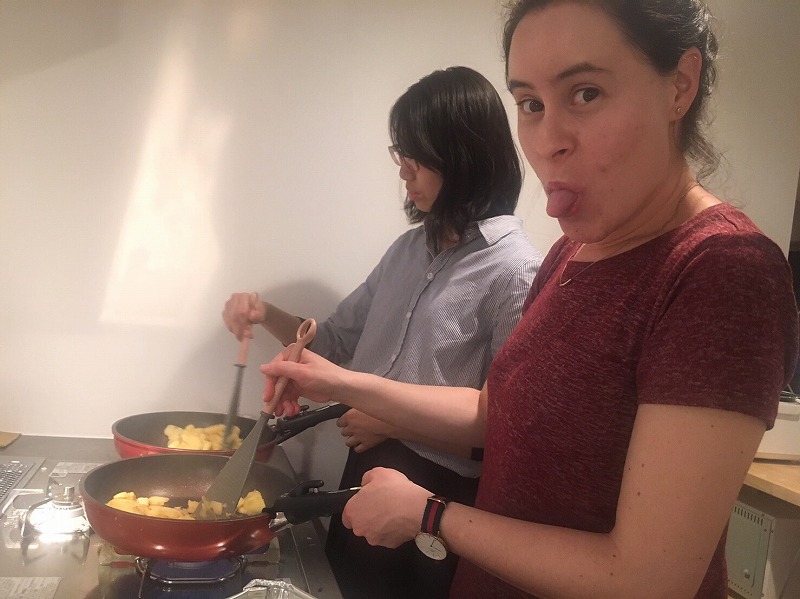
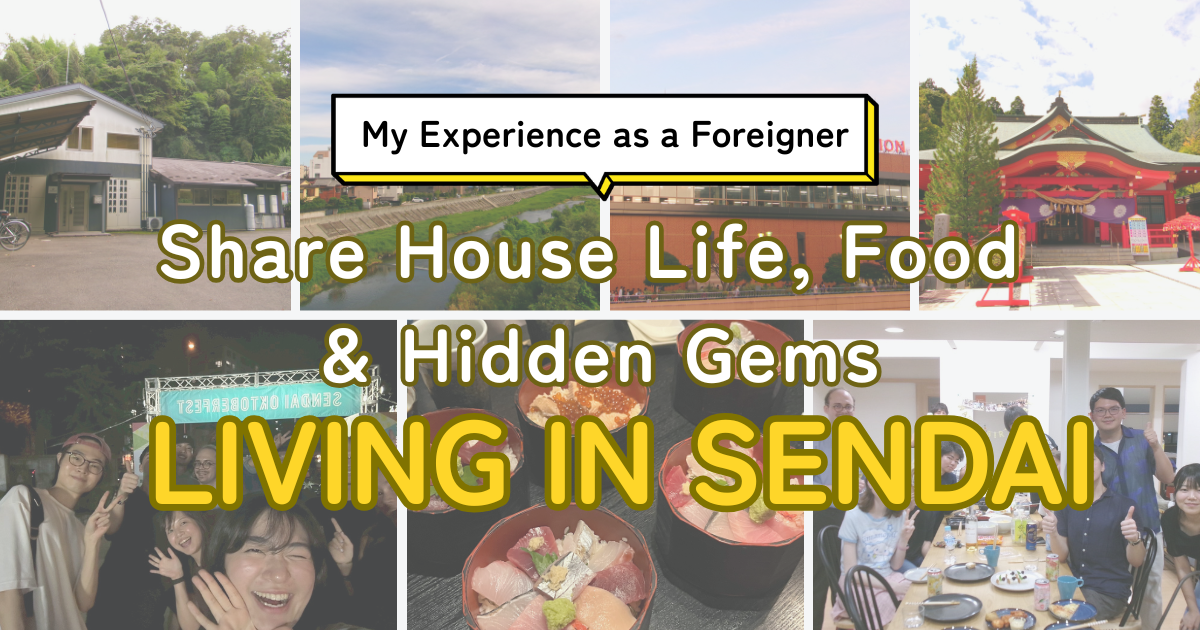

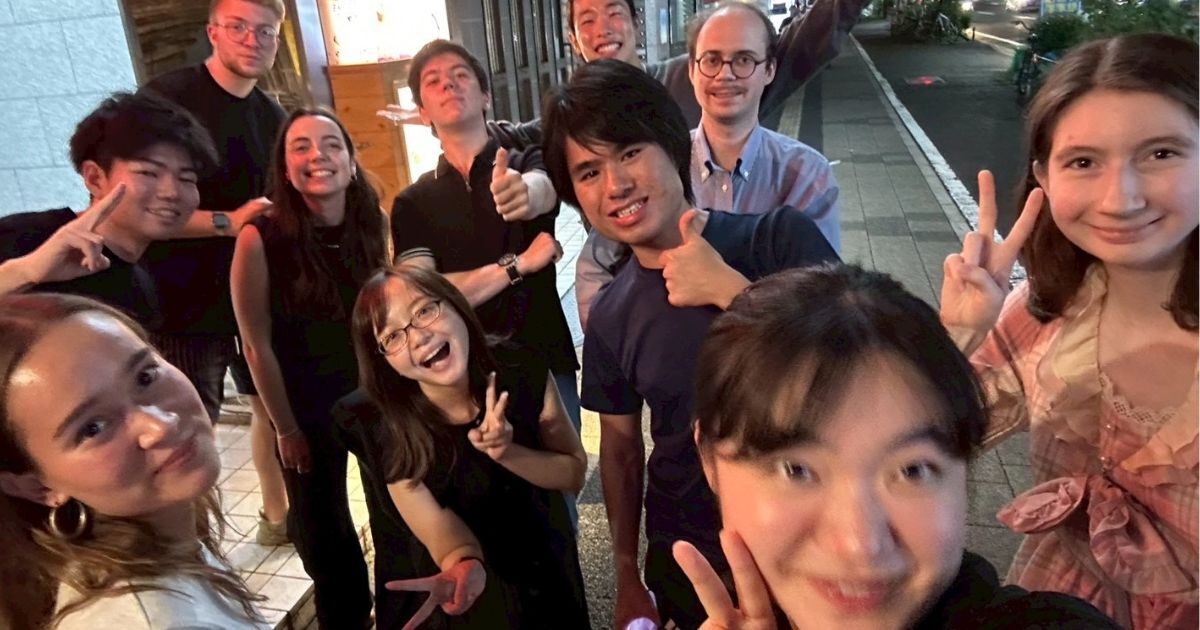
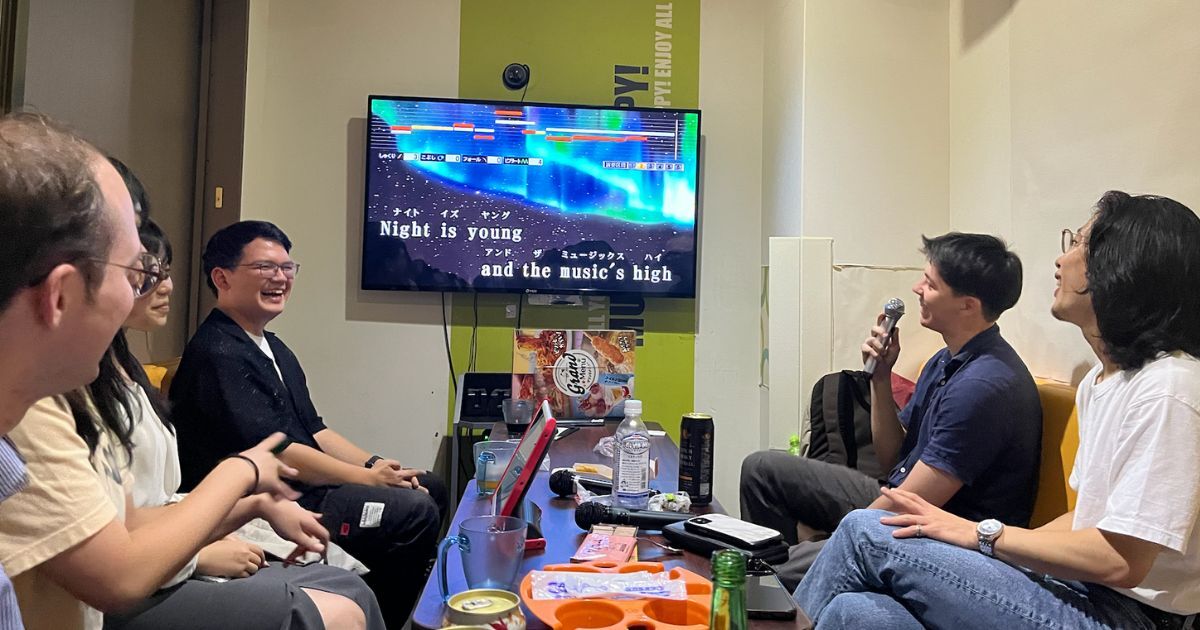

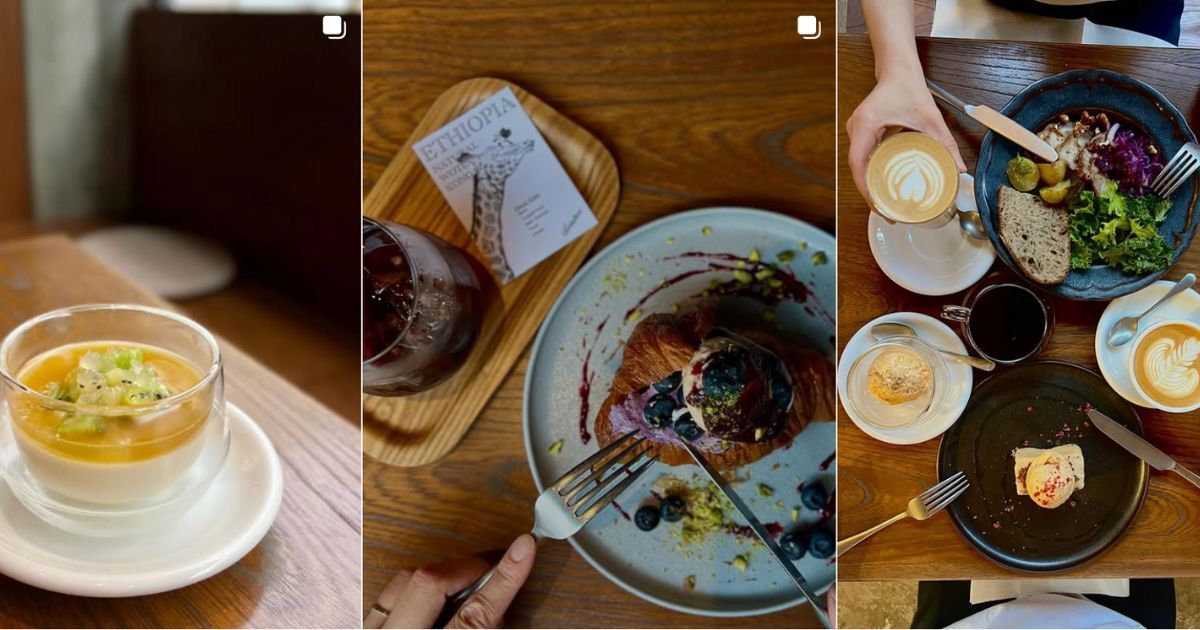
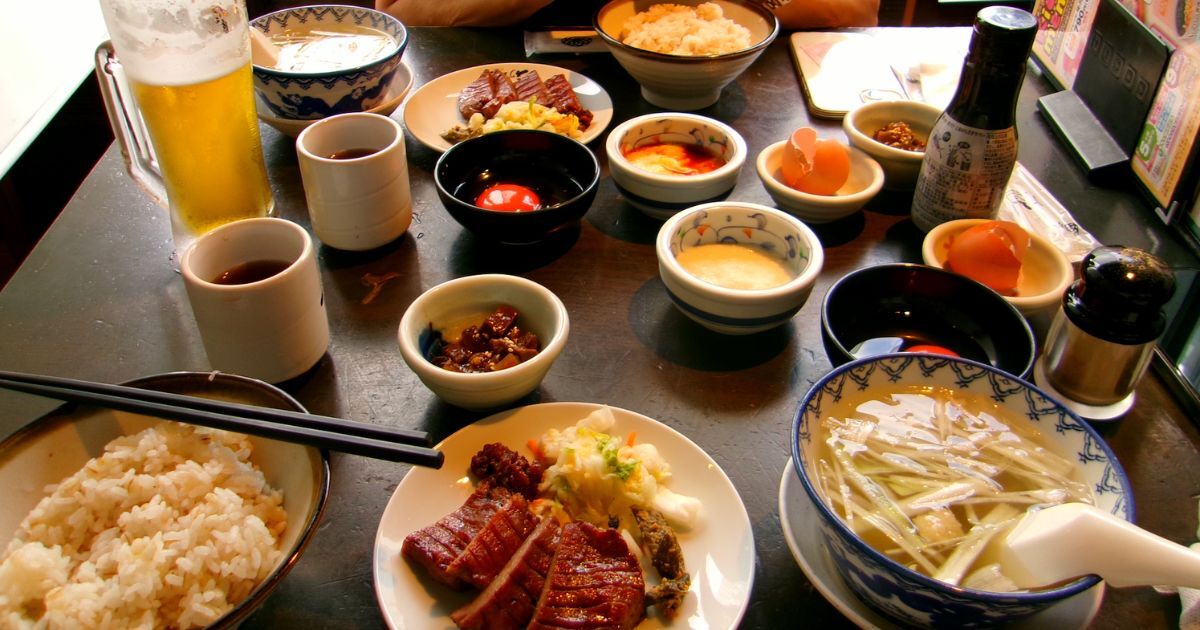
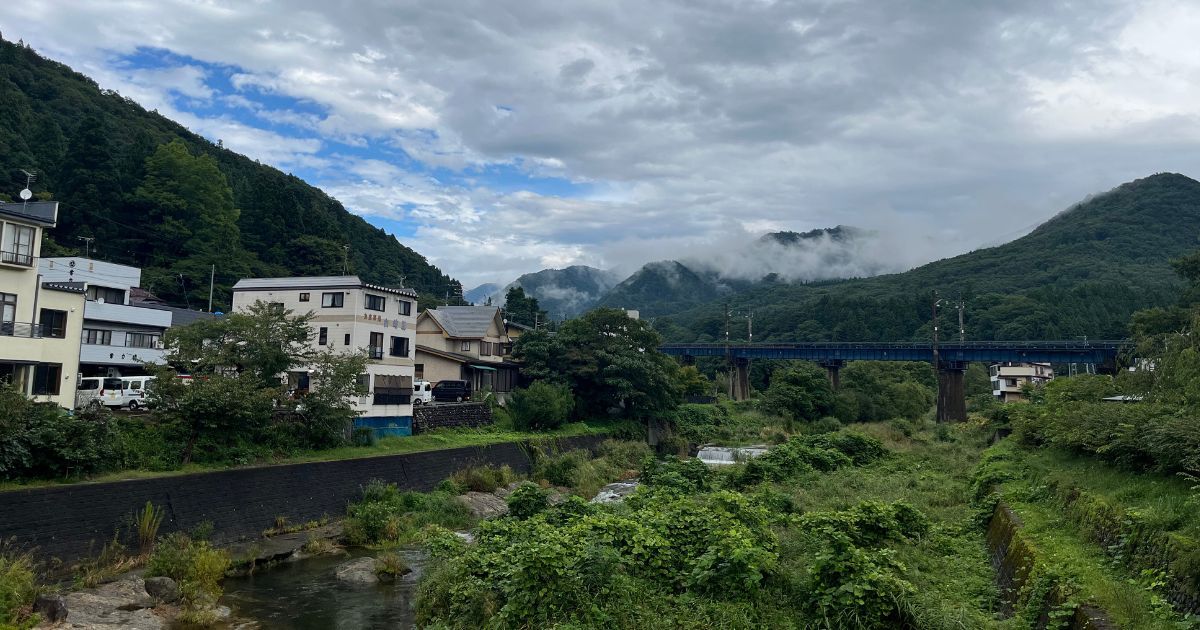






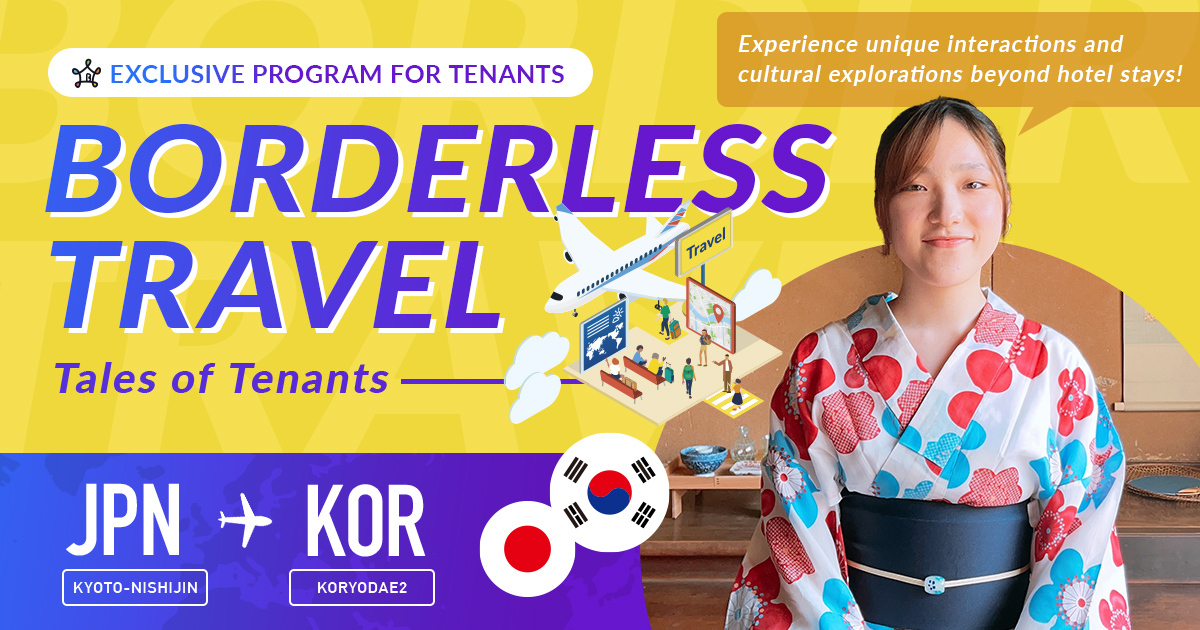
 Yuzuki’s time at Nishijin House brought about a significant shift in her views on English and international interactions. She explained that her decision to move there stemmed from a desire to conquer her fear of English and engage with people from different countries.
Yuzuki’s time at Nishijin House brought about a significant shift in her views on English and international interactions. She explained that her decision to move there stemmed from a desire to conquer her fear of English and engage with people from different countries.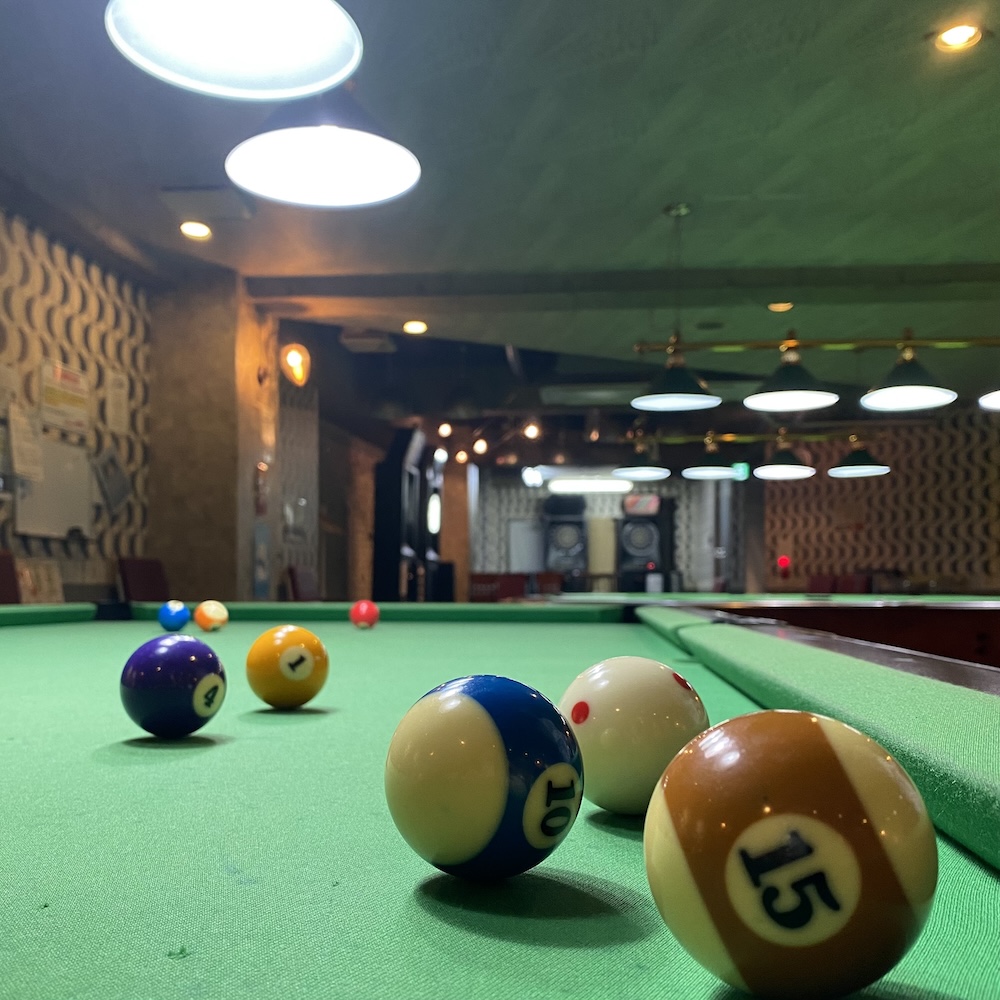


 Yuzuki: When I got to Koryodaes House, I was greeted by Robin, the staff member I had been communicating with by email. Meeting him in person really helped me settle in. He showed me around and shared some local tips and places to visit.
Yuzuki: When I got to Koryodaes House, I was greeted by Robin, the staff member I had been communicating with by email. Meeting him in person really helped me settle in. He showed me around and shared some local tips and places to visit.
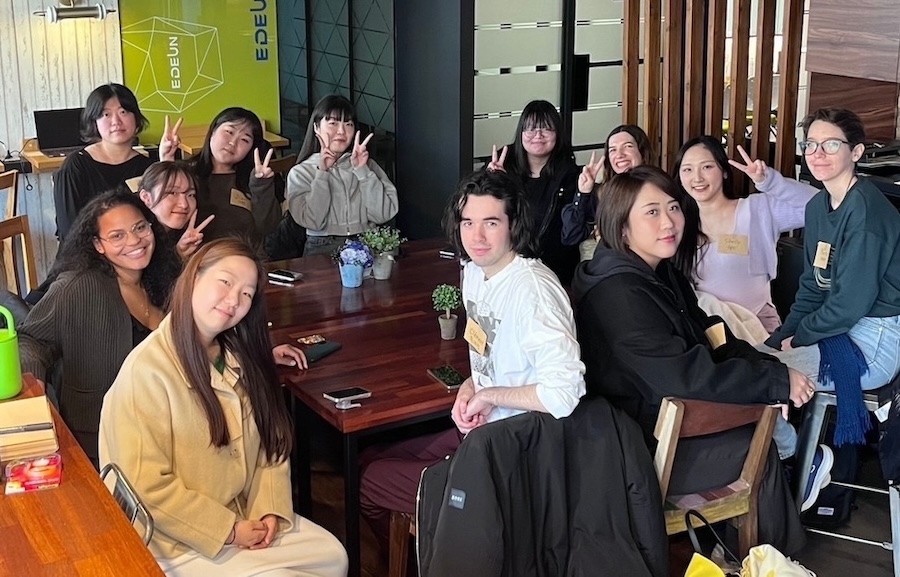


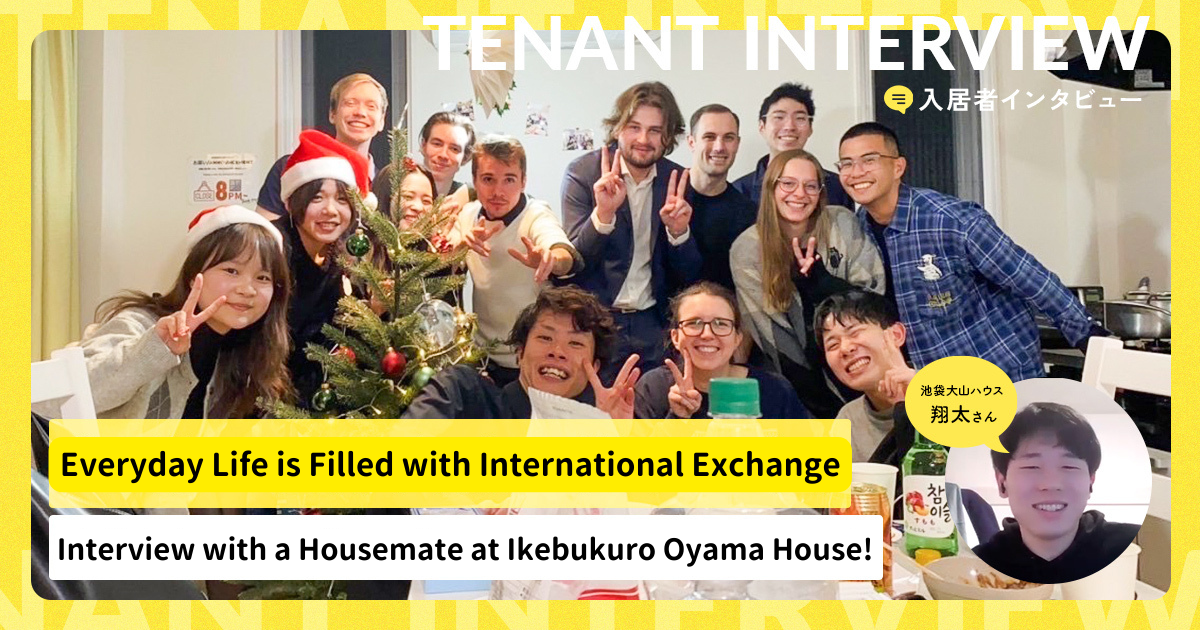
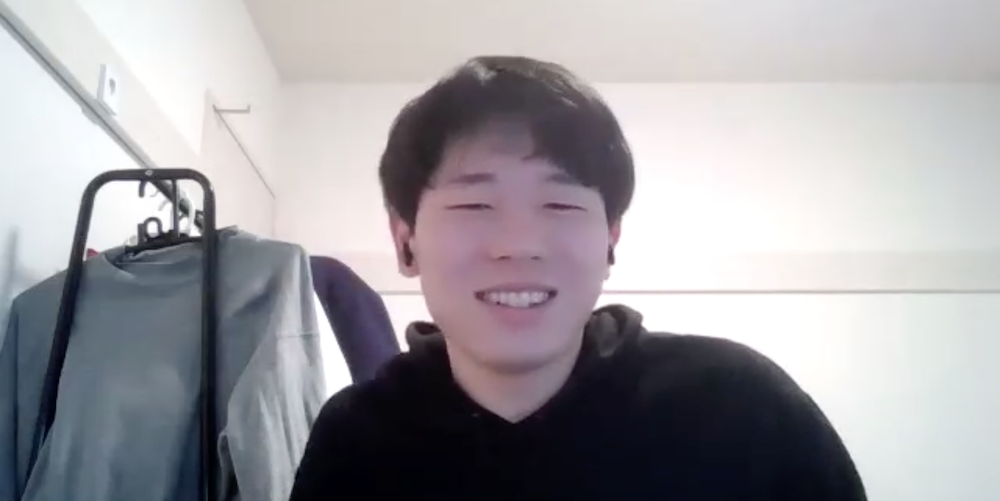
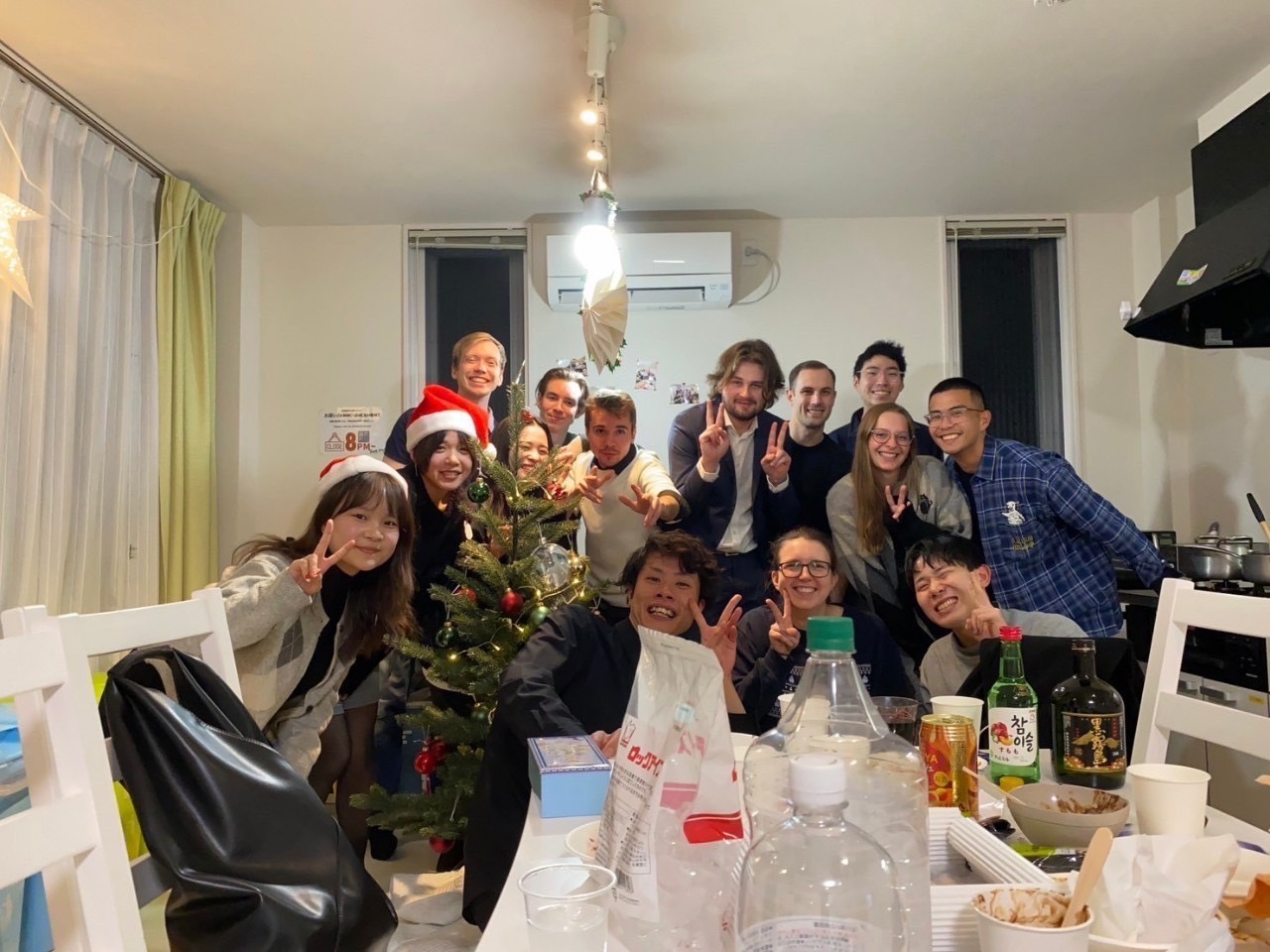
 ▲Becoming Best Friends with Mats After a Hospital Visit
▲Becoming Best Friends with Mats After a Hospital Visit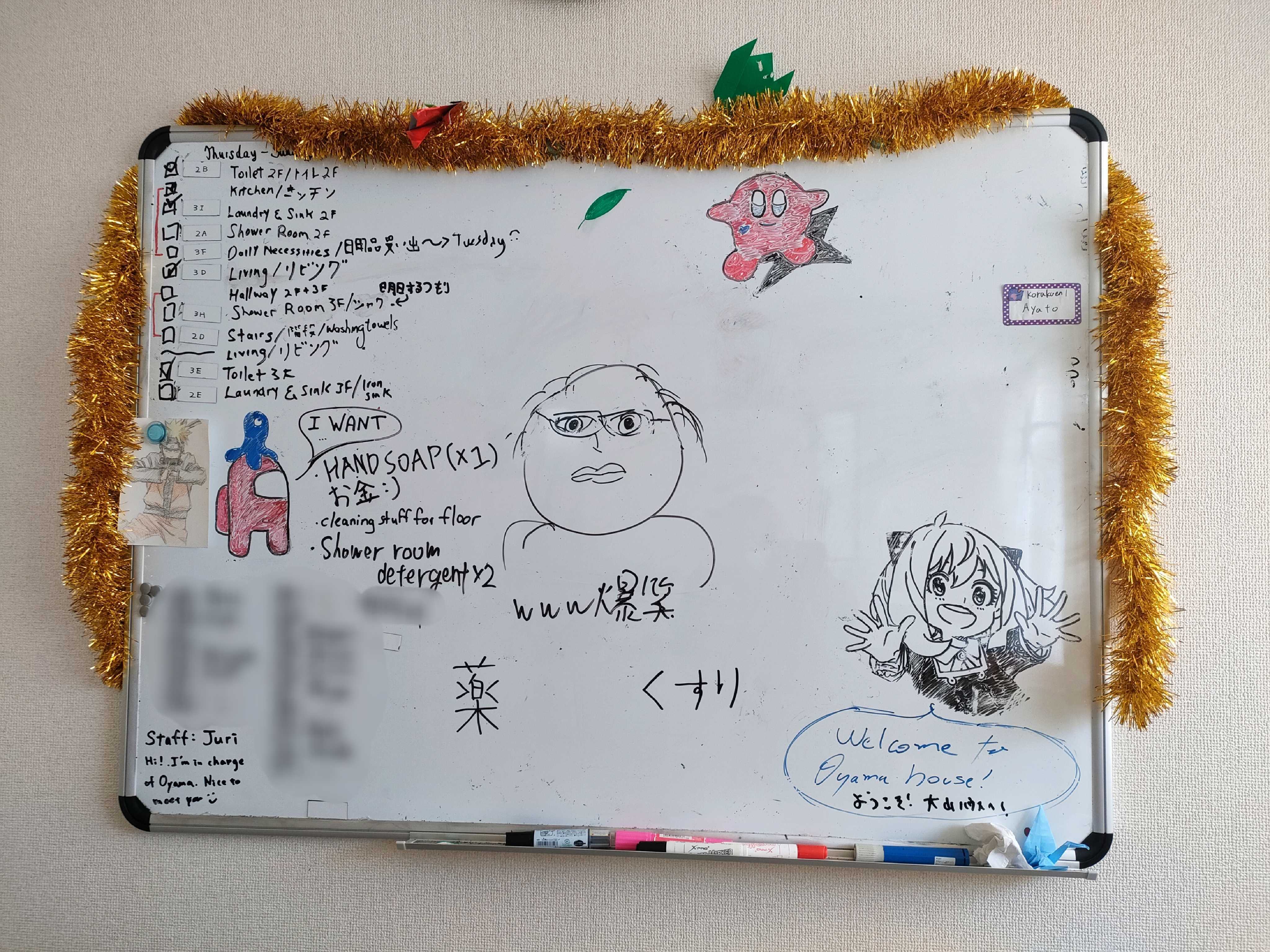 ▲Rotating Cleaning Duties and Passionate Discussions
▲Rotating Cleaning Duties and Passionate Discussions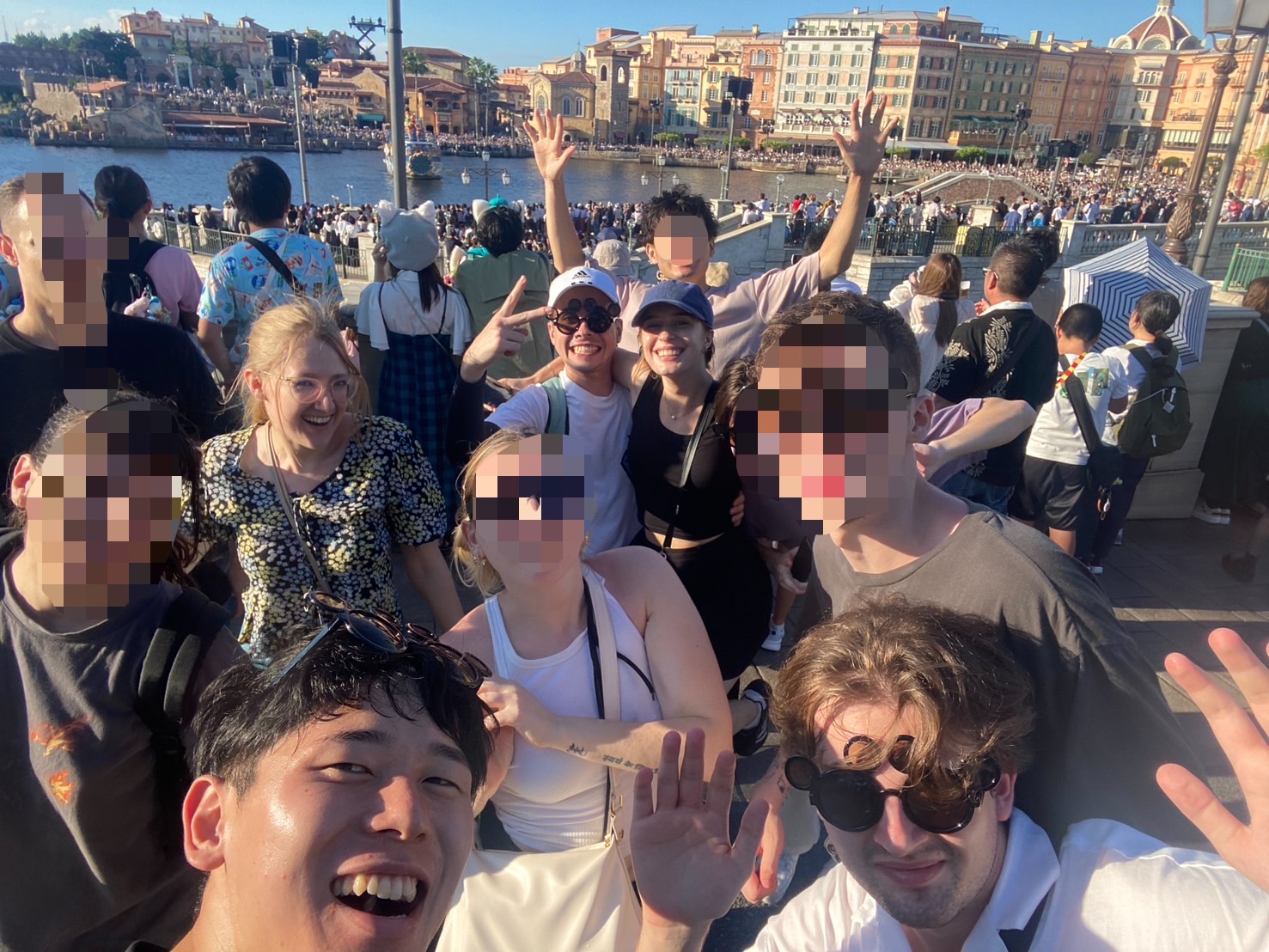 “There was this one time someone started playing music, and suddenly we were all dancing in the queue (laughs).”
“There was this one time someone started playing music, and suddenly we were all dancing in the queue (laughs).”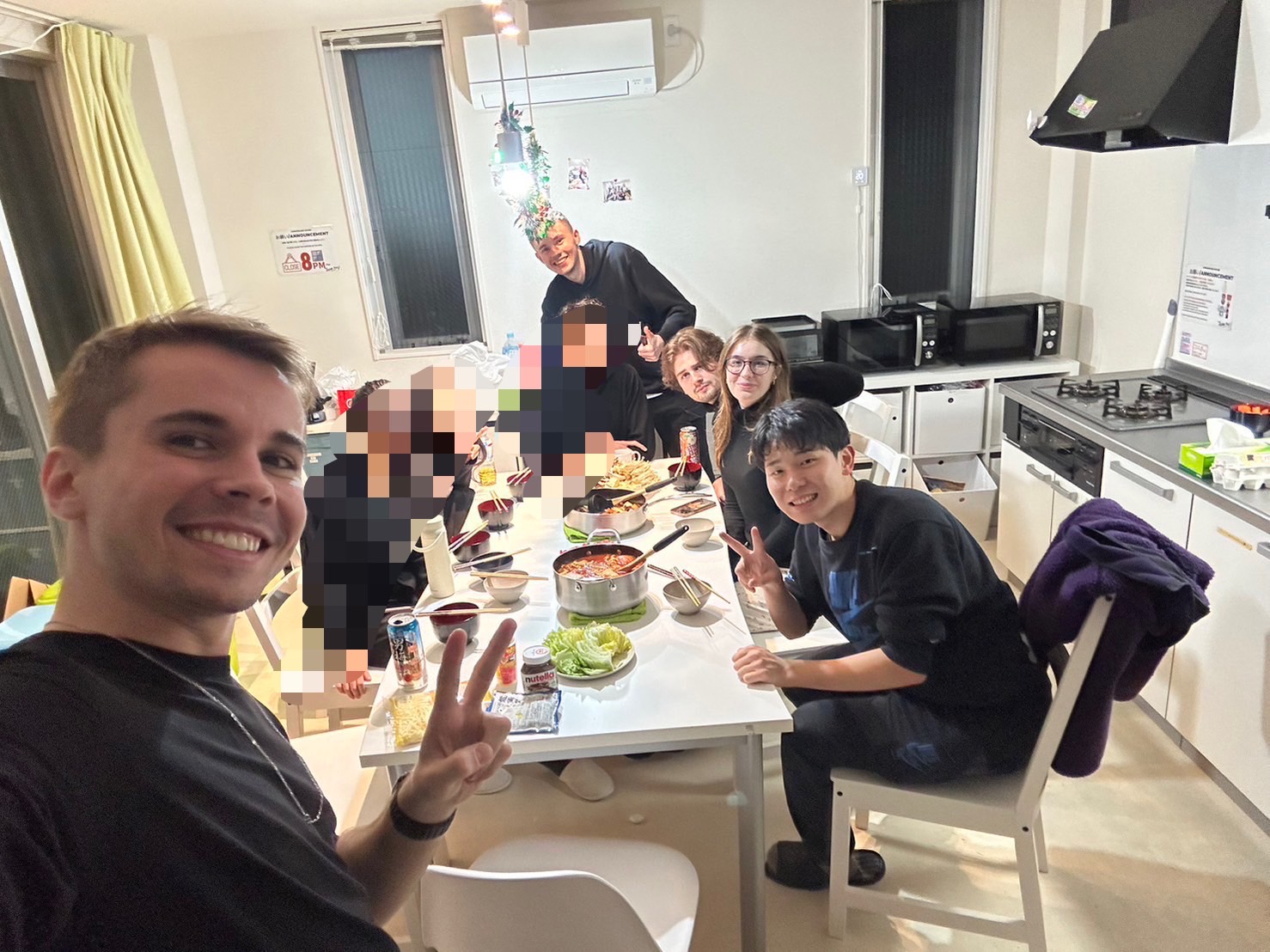
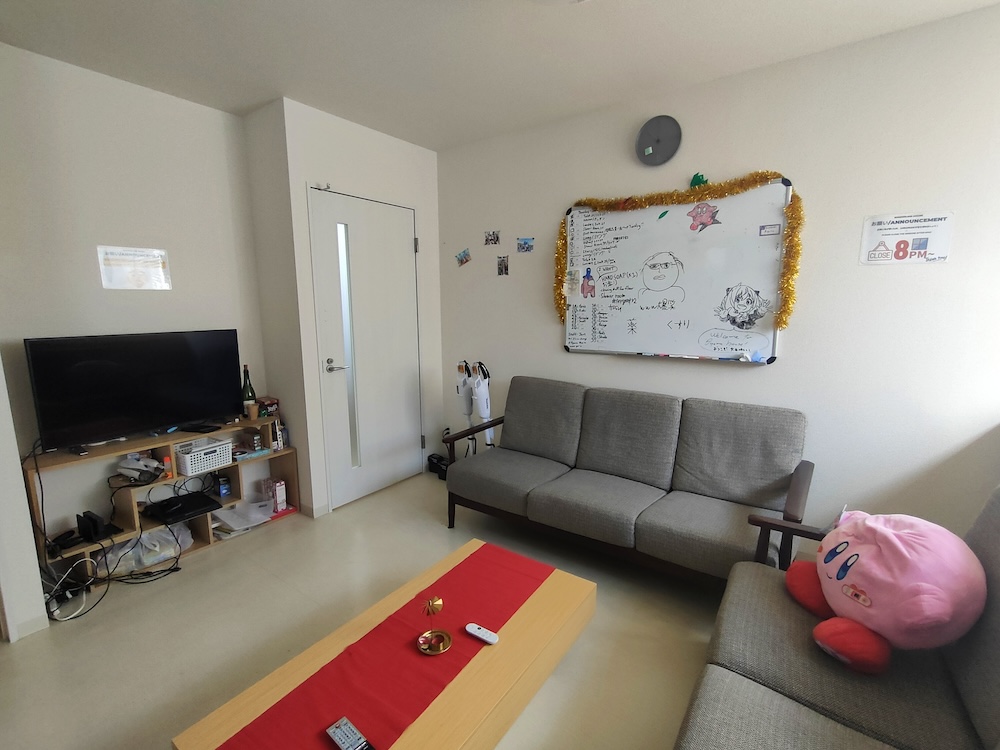 ▲Because everyone diligently fulfills their cleaning duties, the house is always kept in a clean state.
▲Because everyone diligently fulfills their cleaning duties, the house is always kept in a clean state.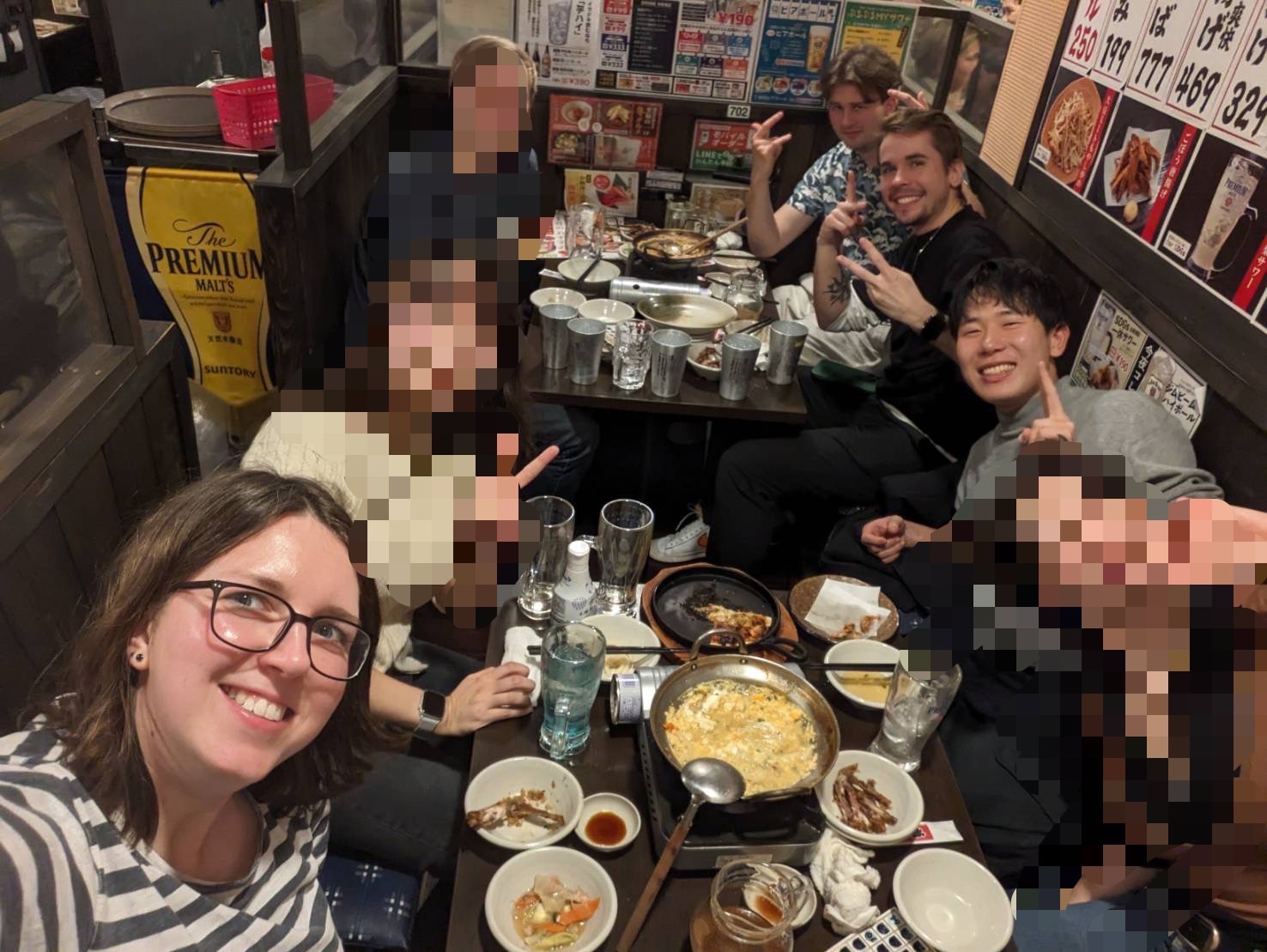
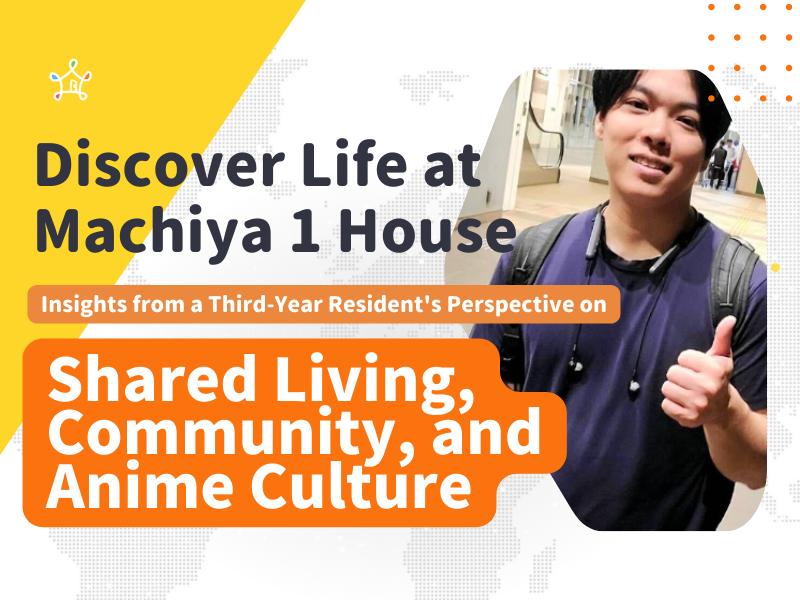
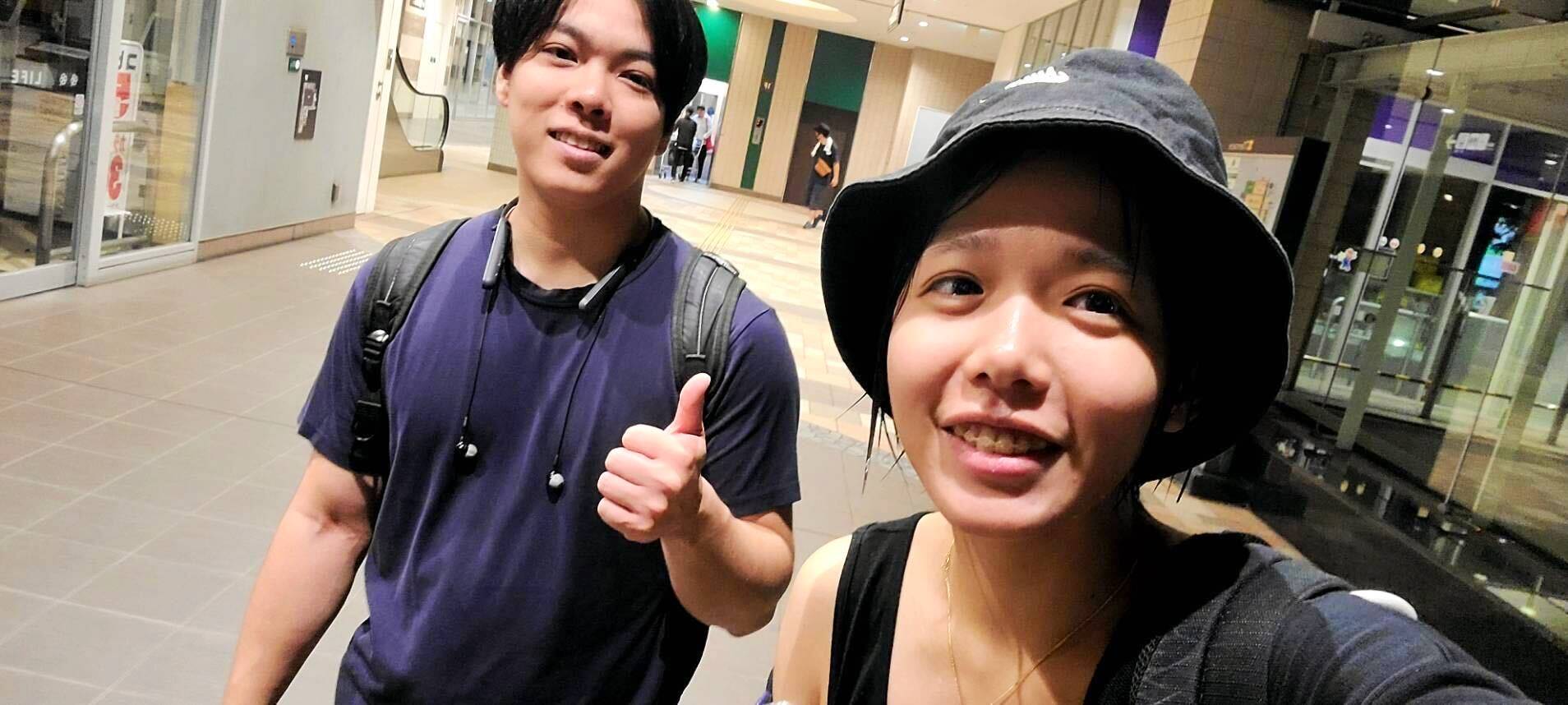
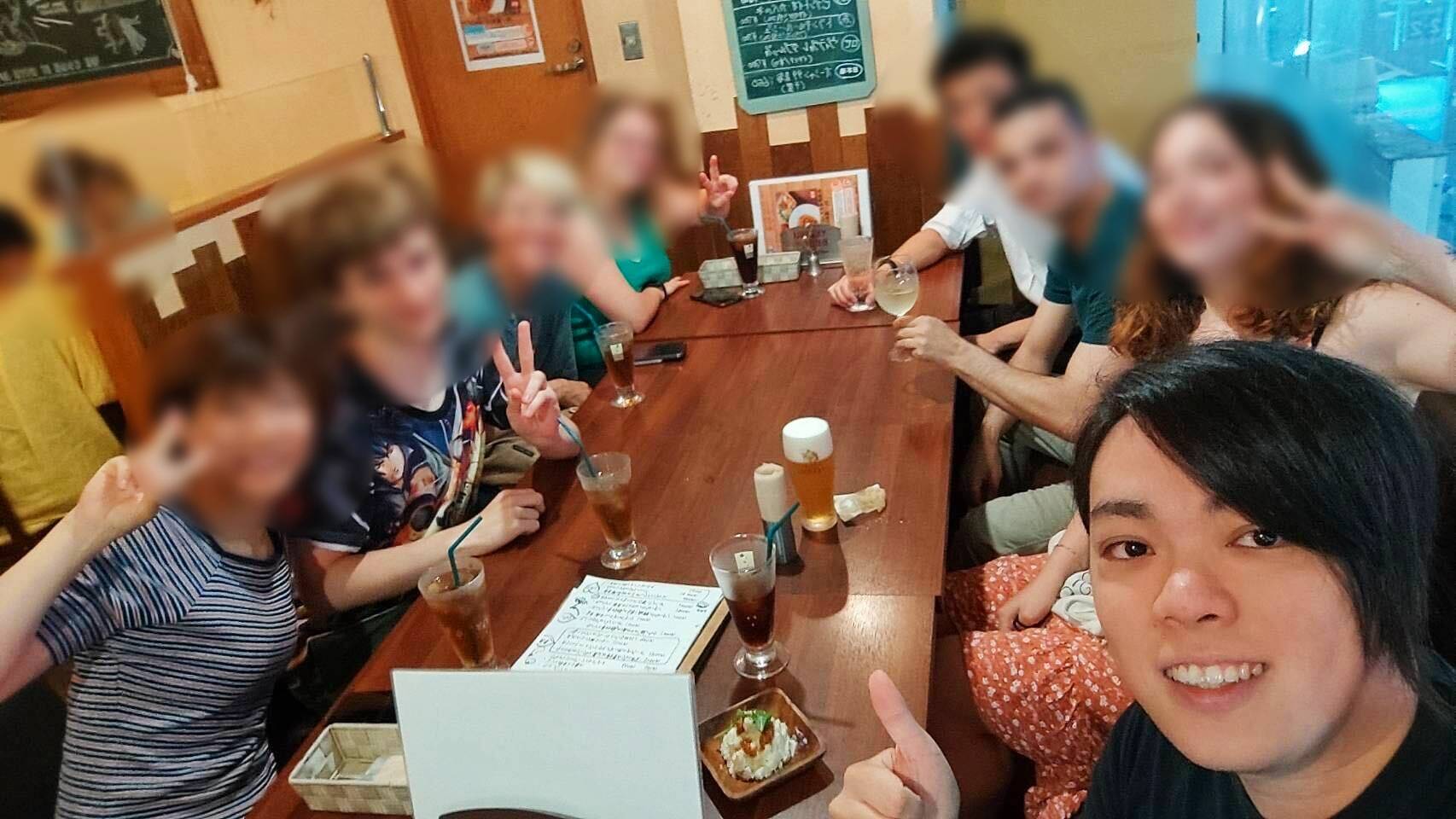 ───Who’s currently living in Machiya 1 House?
───Who’s currently living in Machiya 1 House?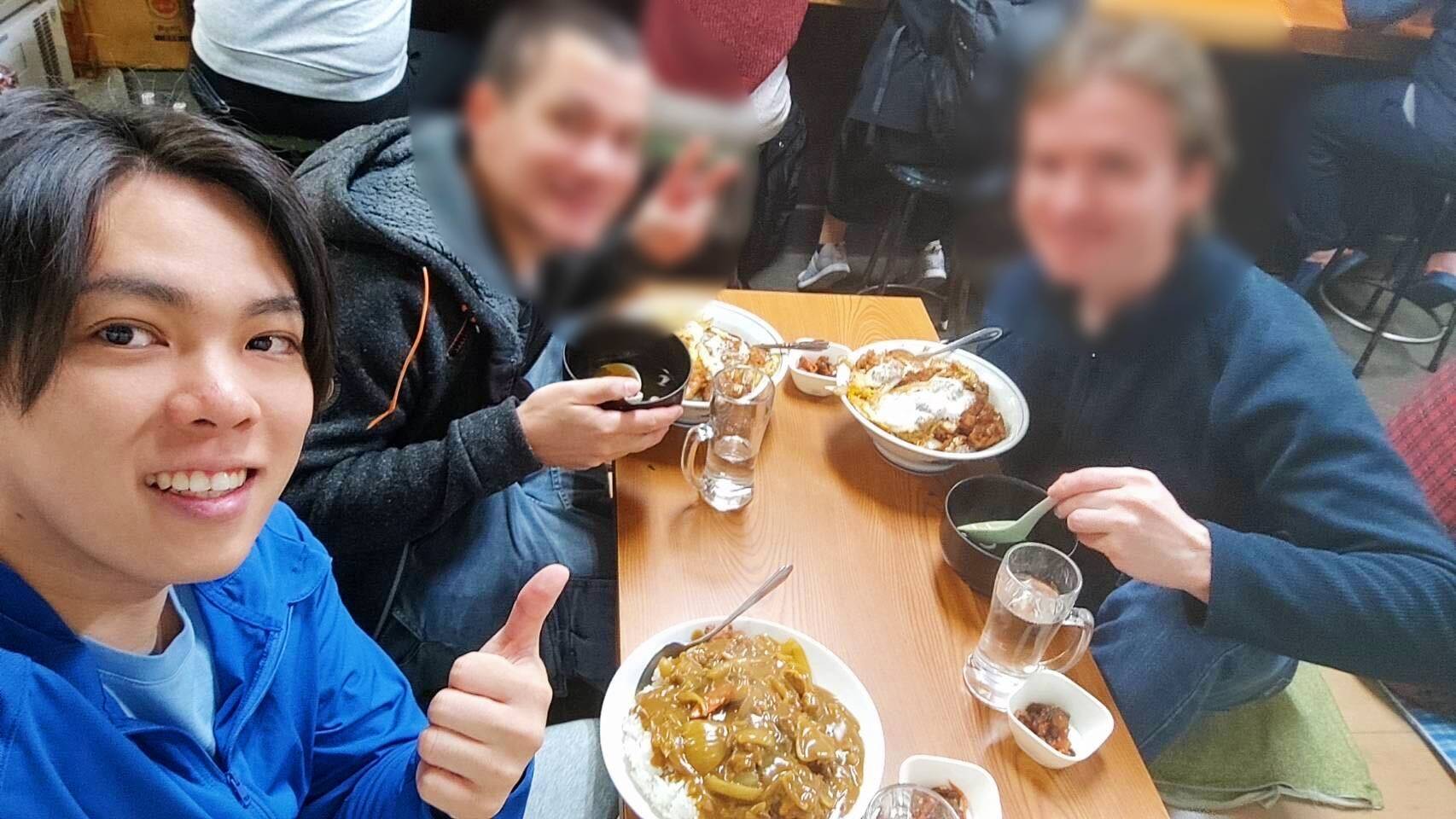
 ───What type of person would enjoy living in Machiya 1 House?
───What type of person would enjoy living in Machiya 1 House?




